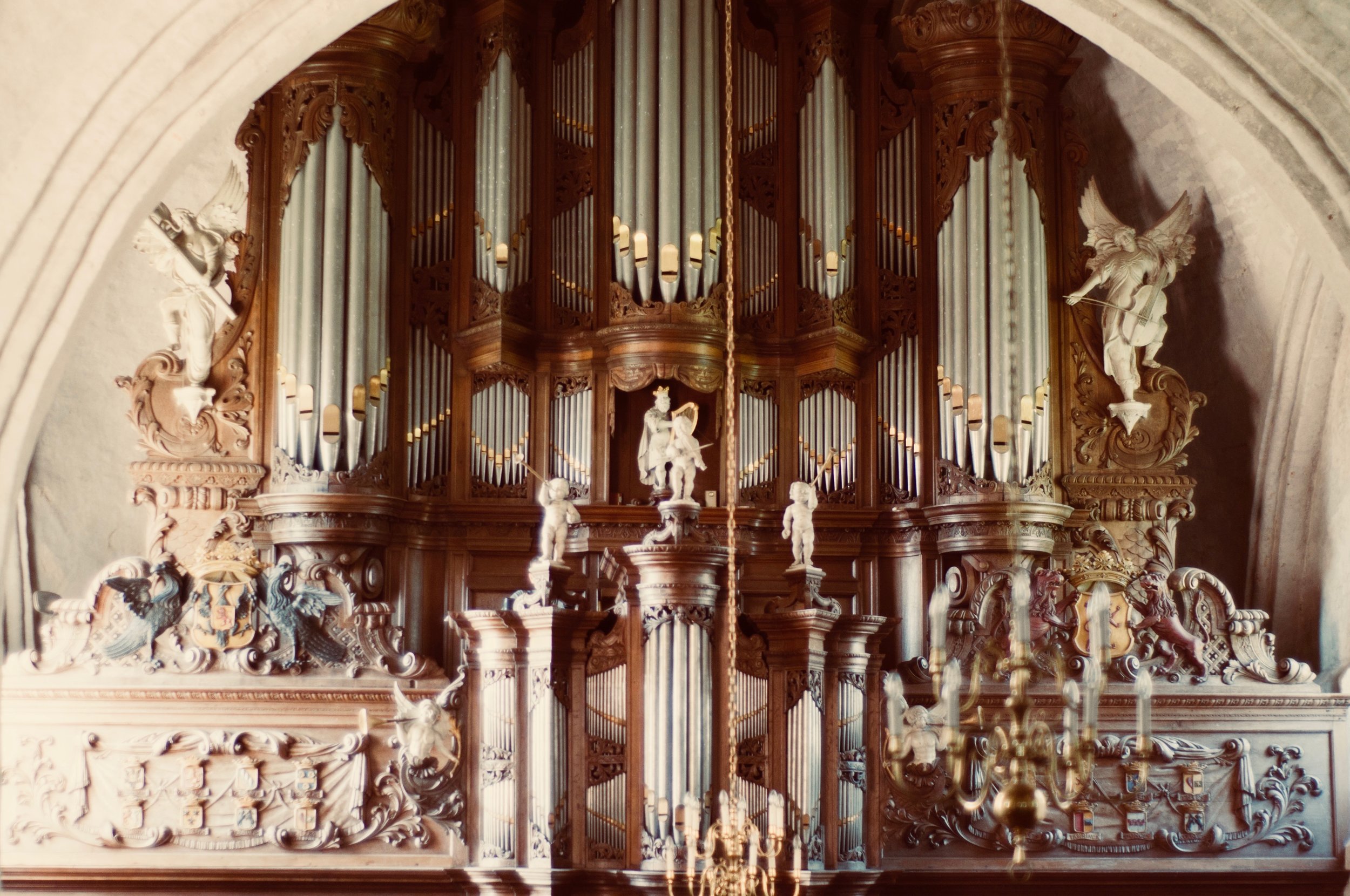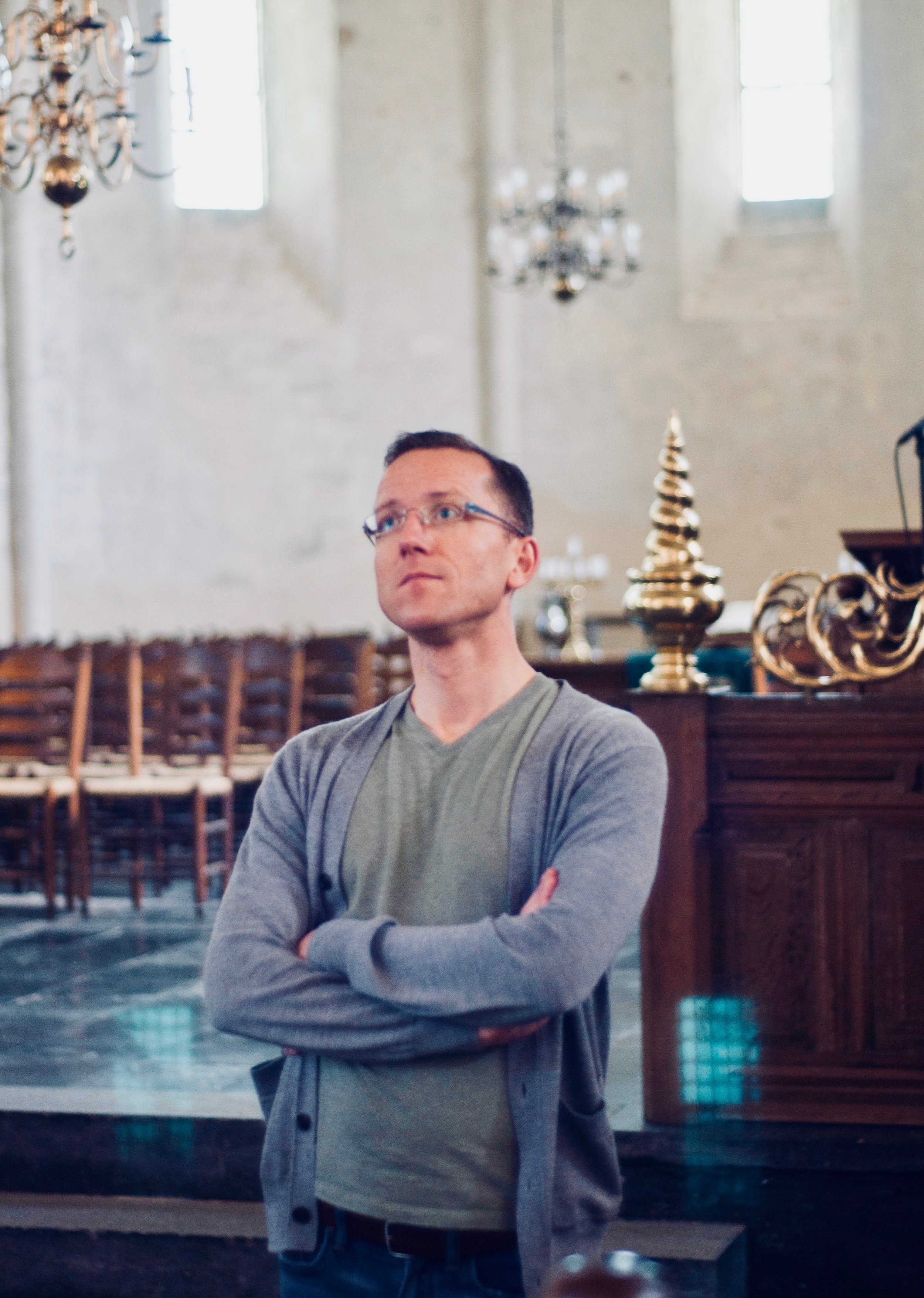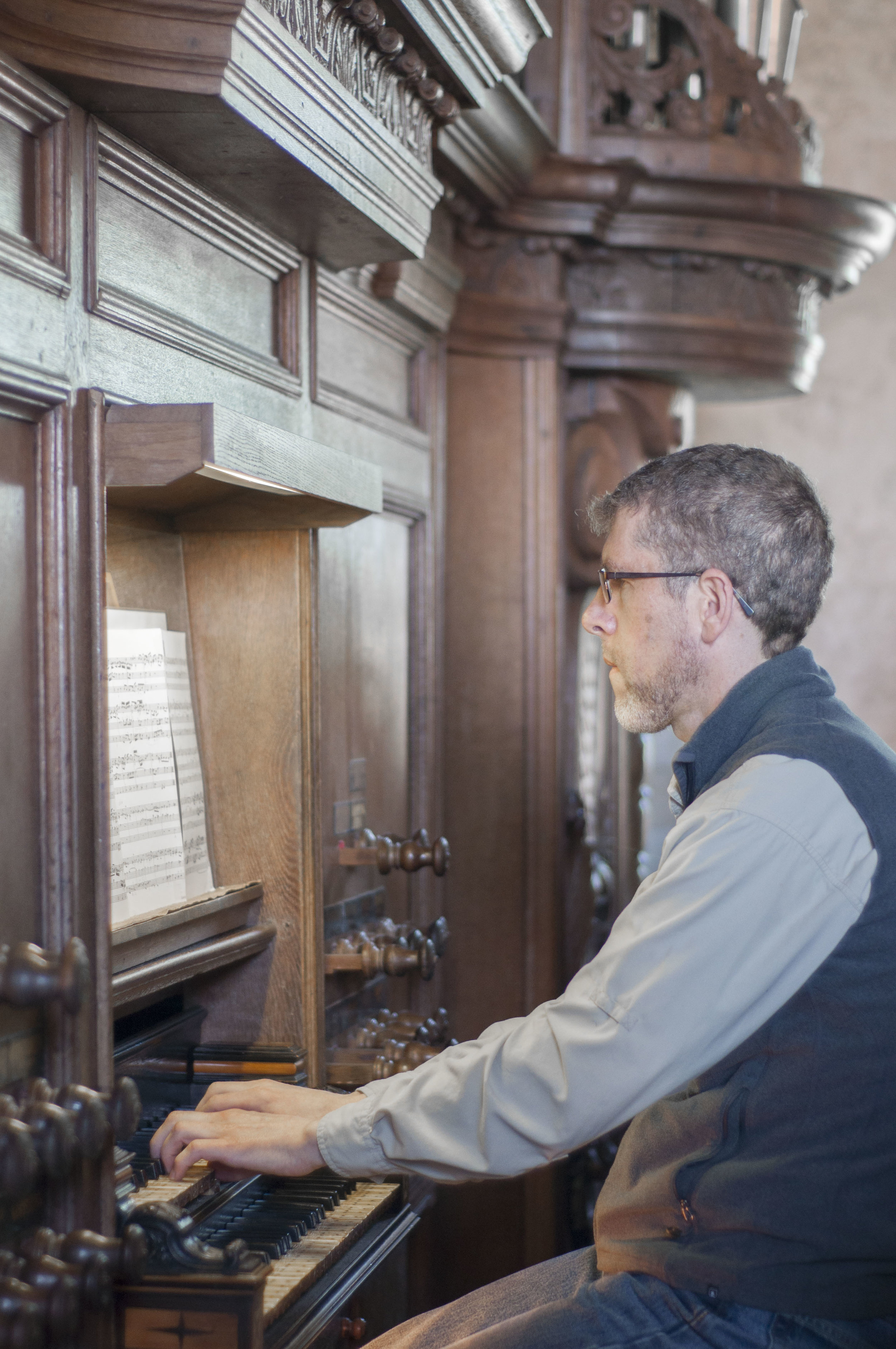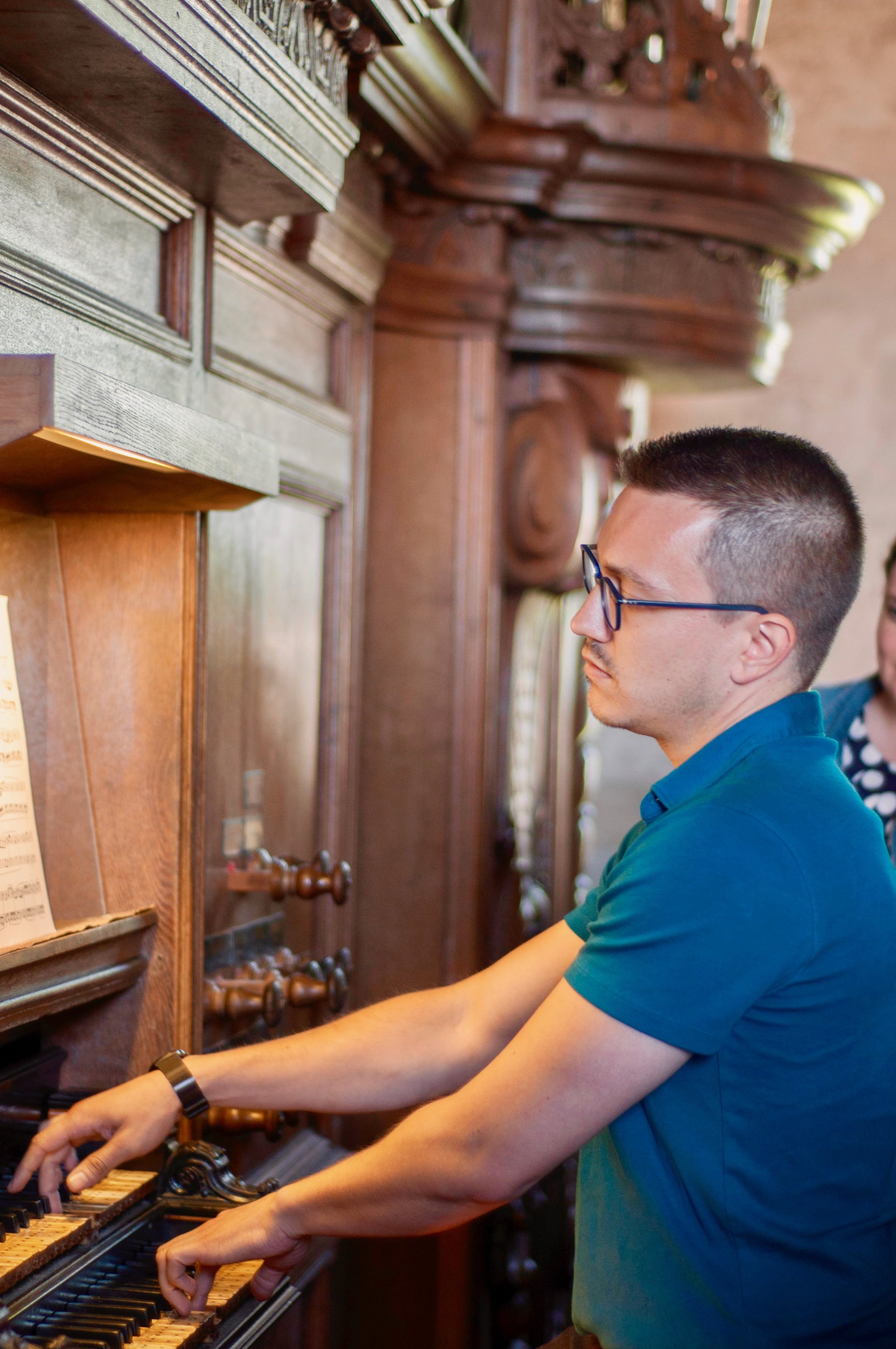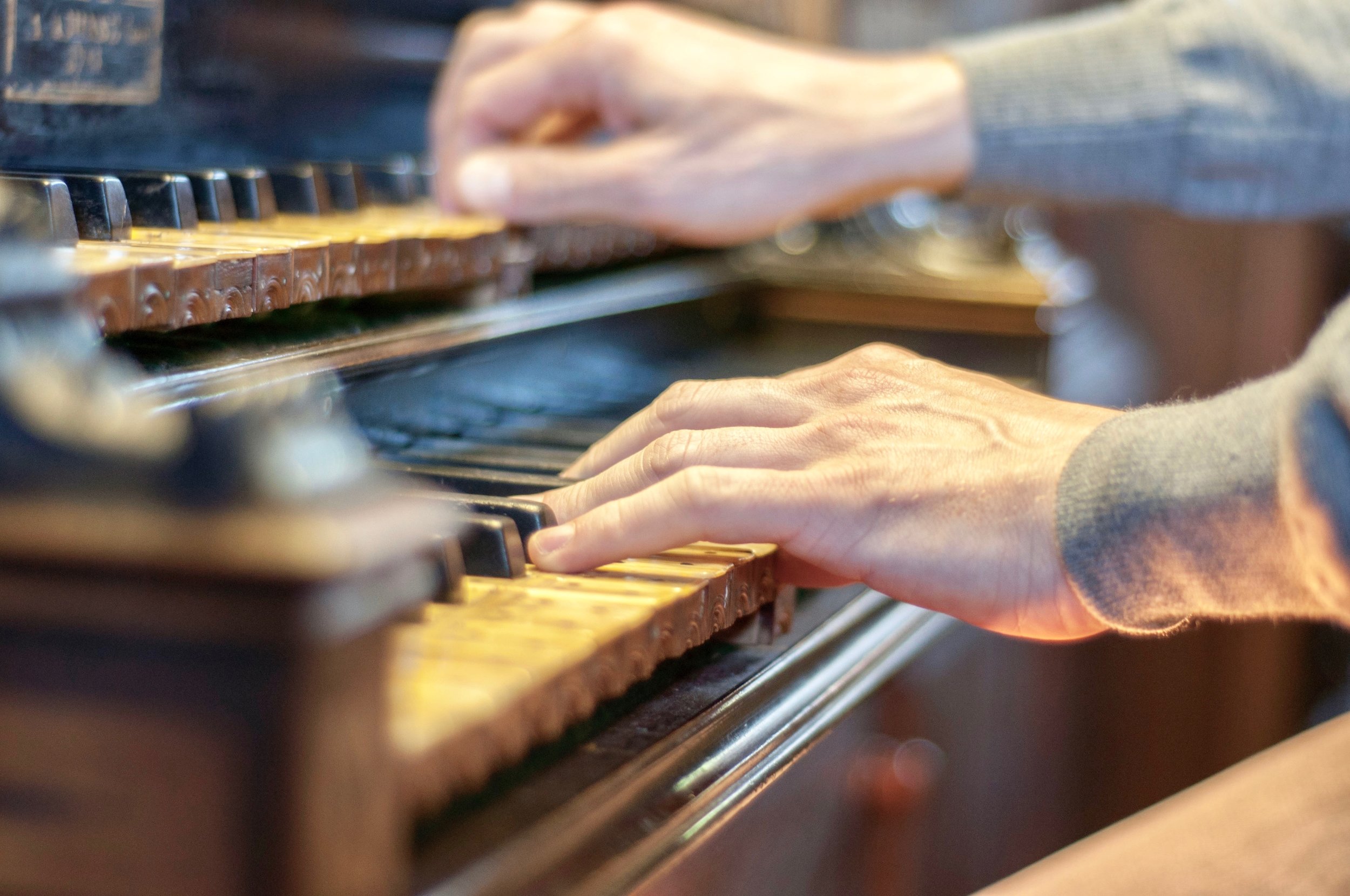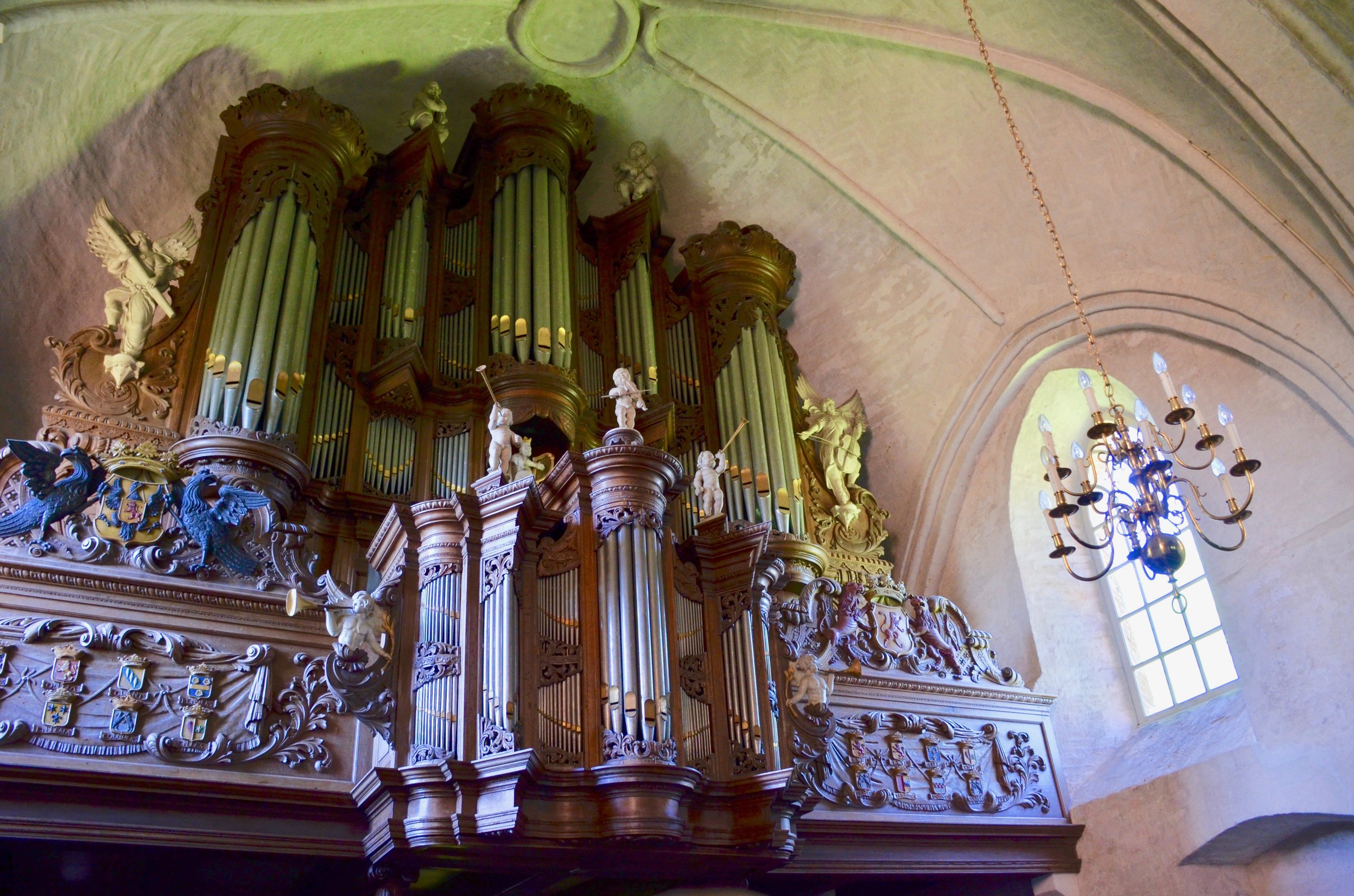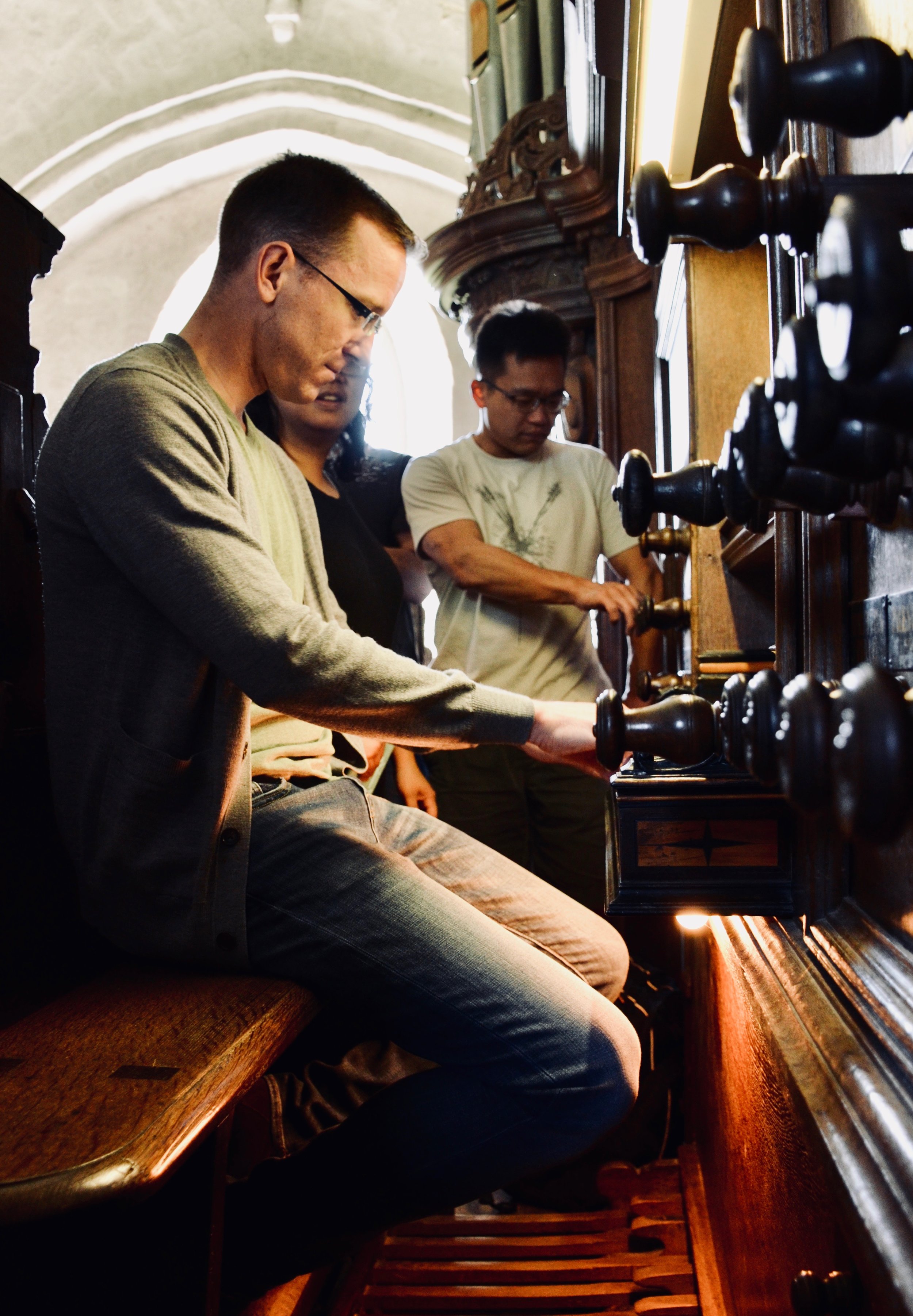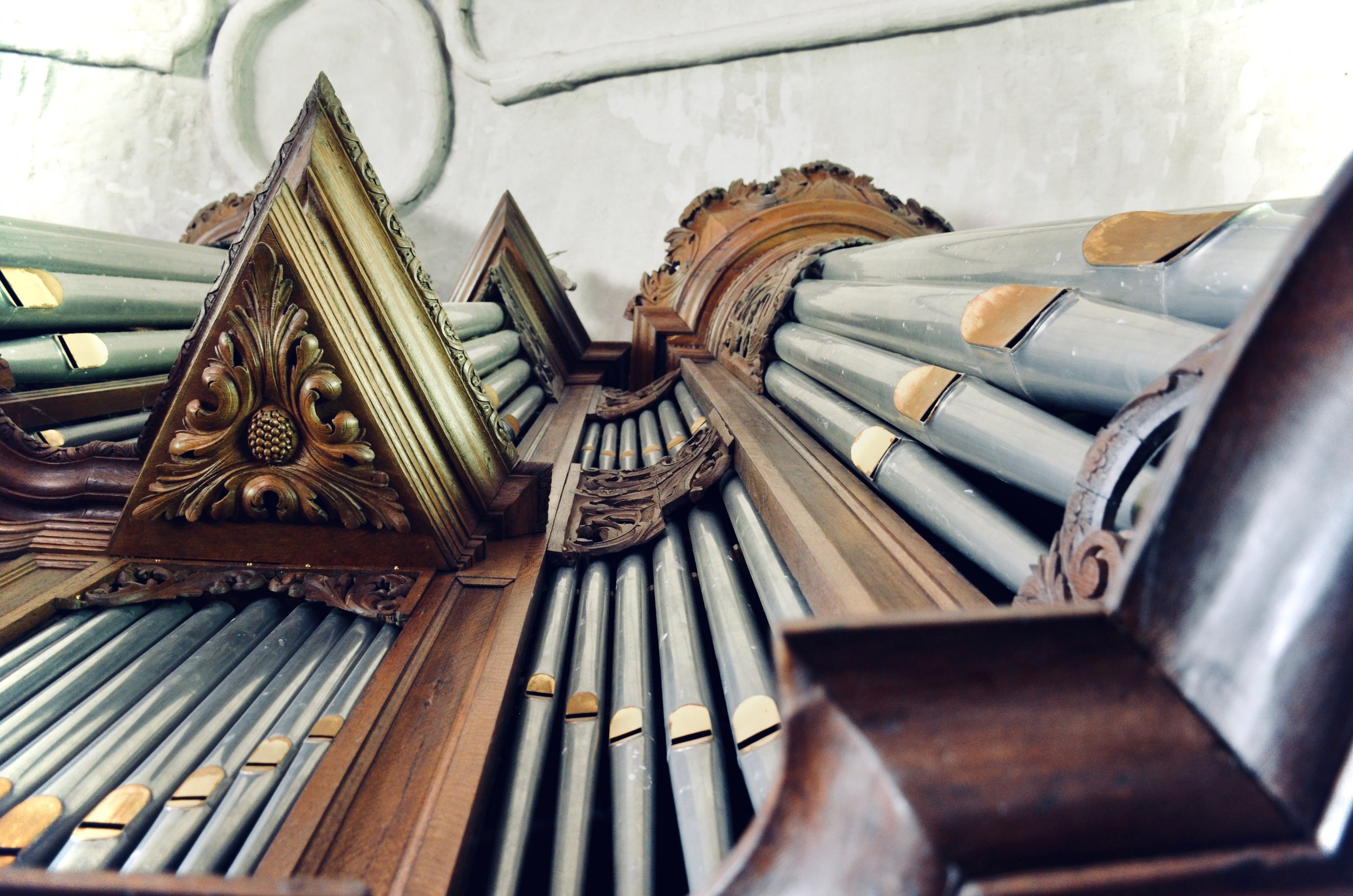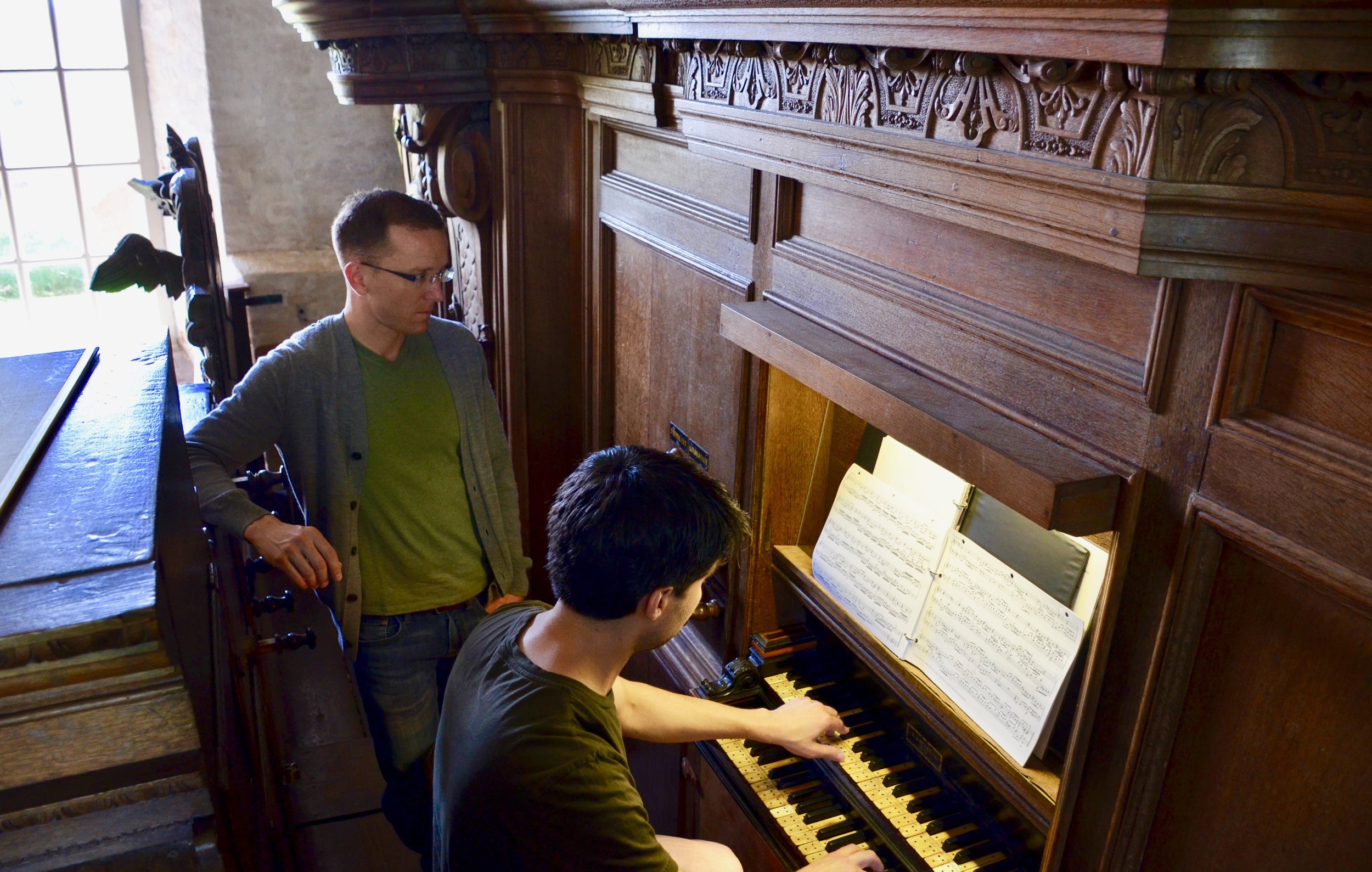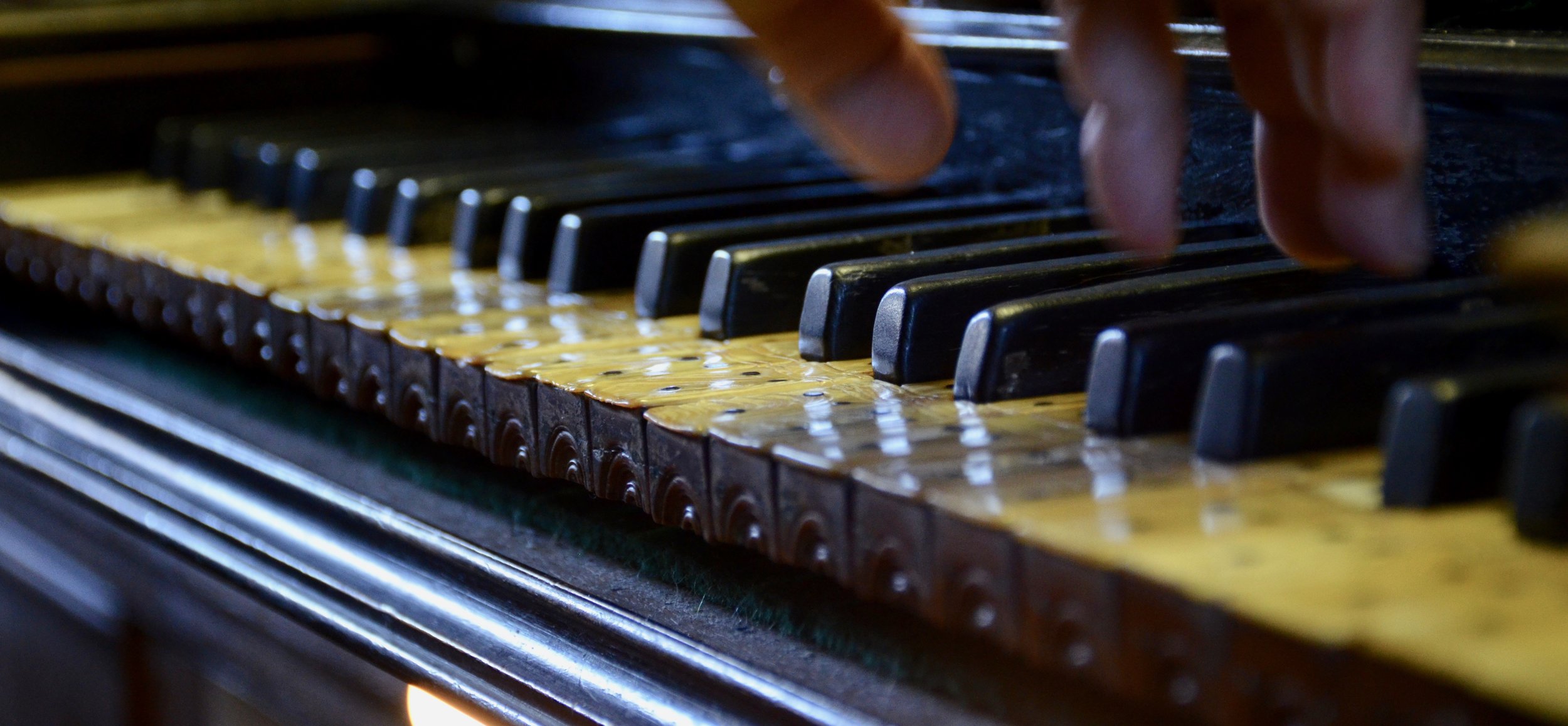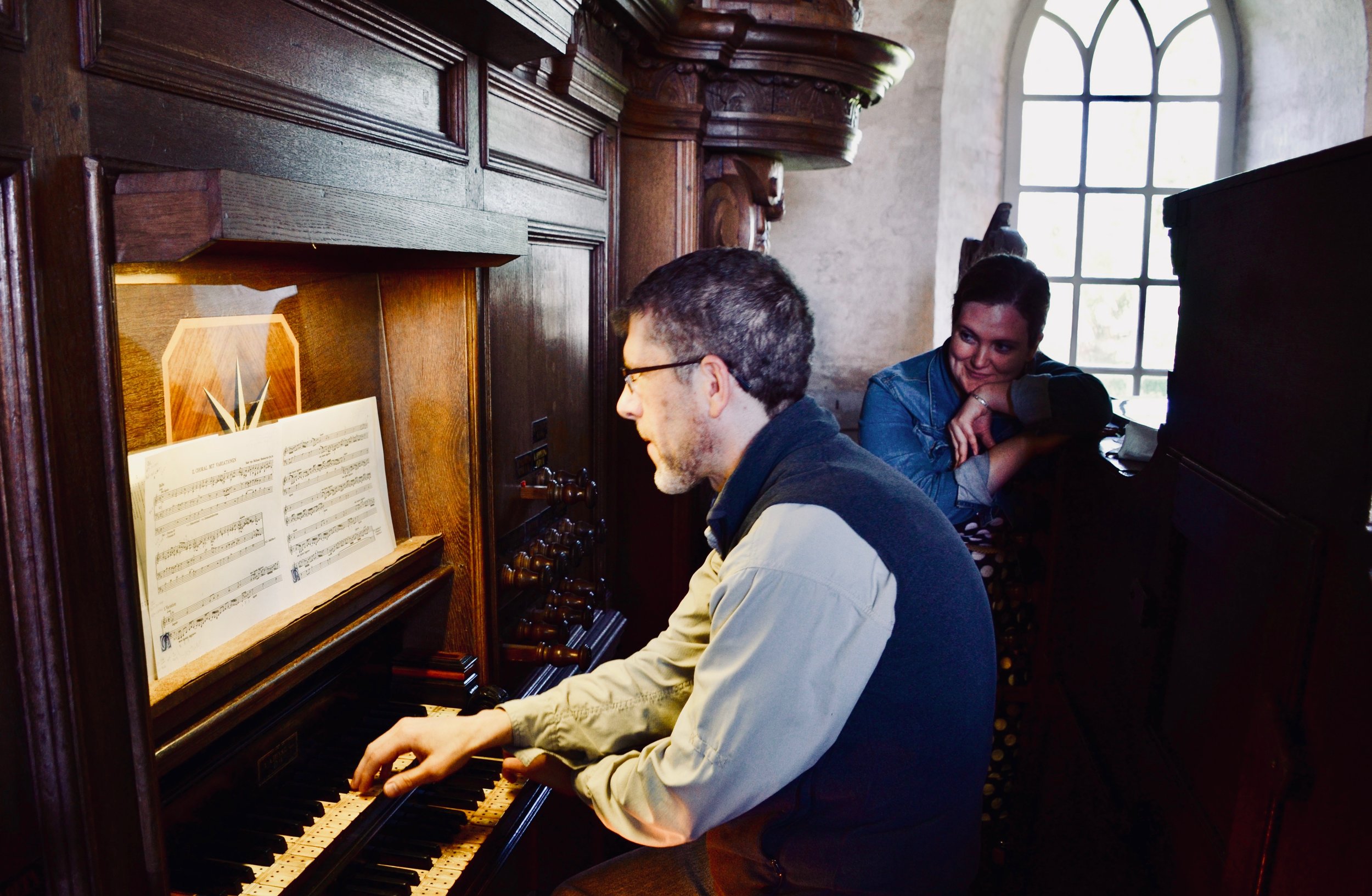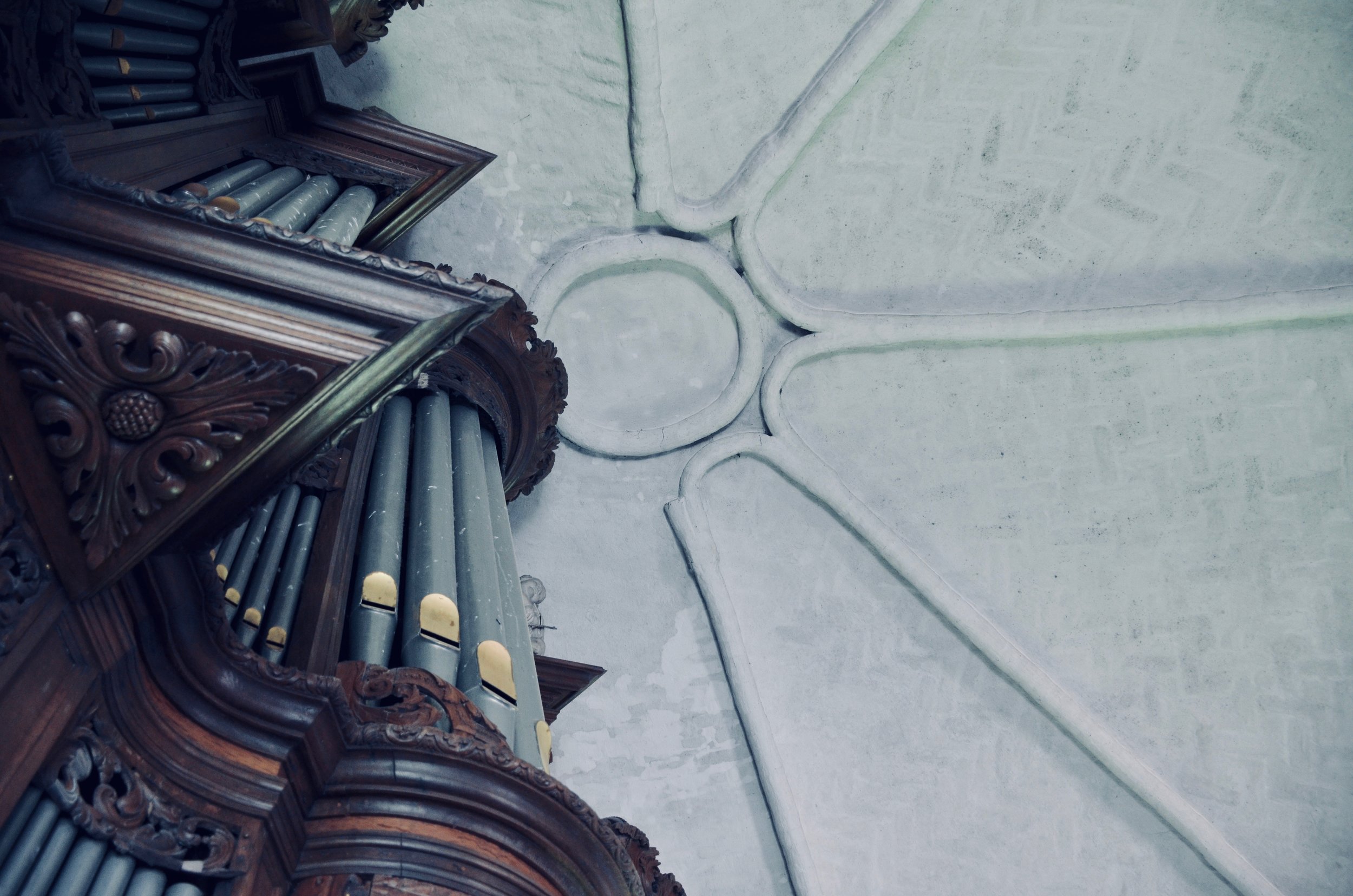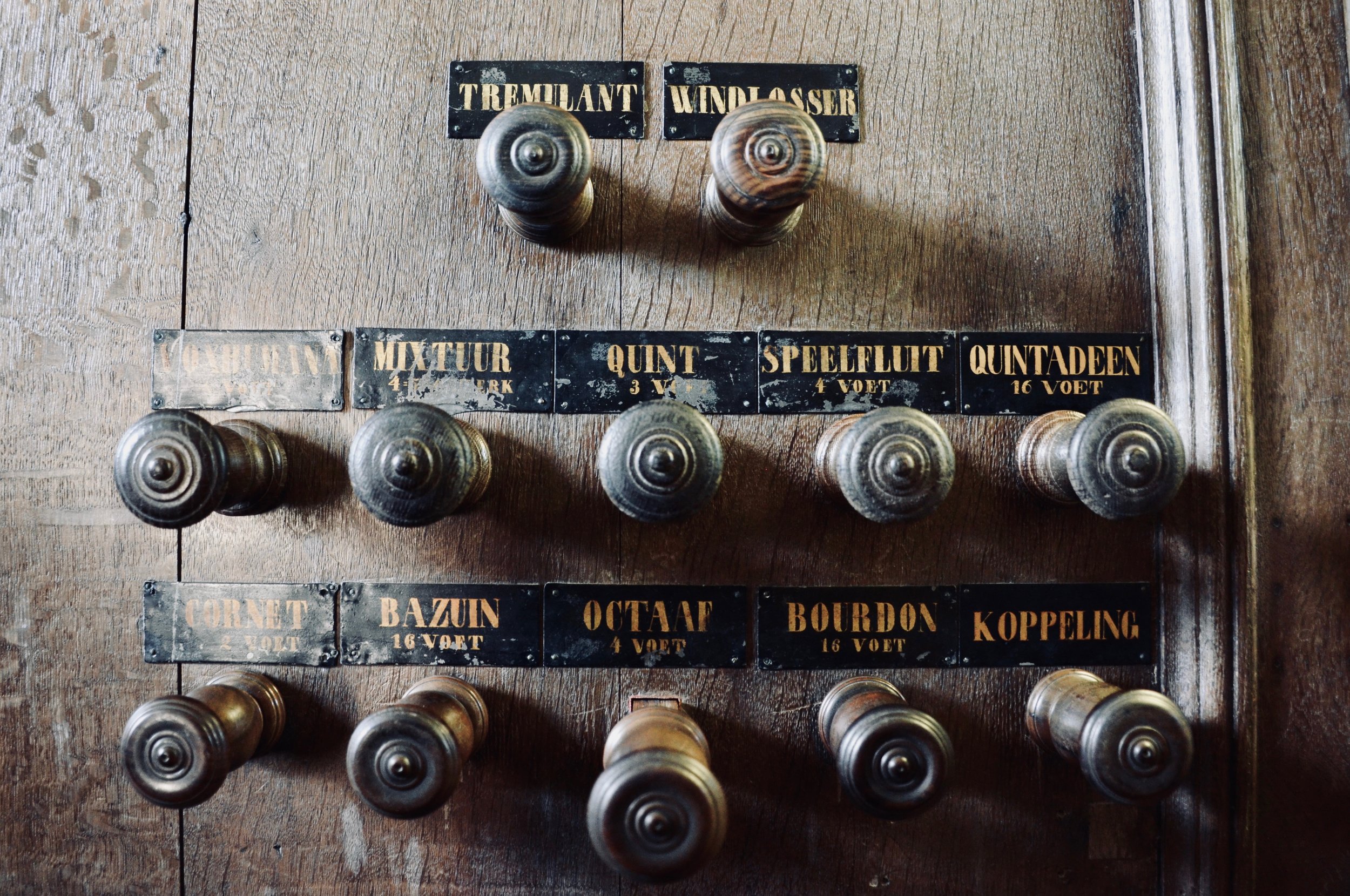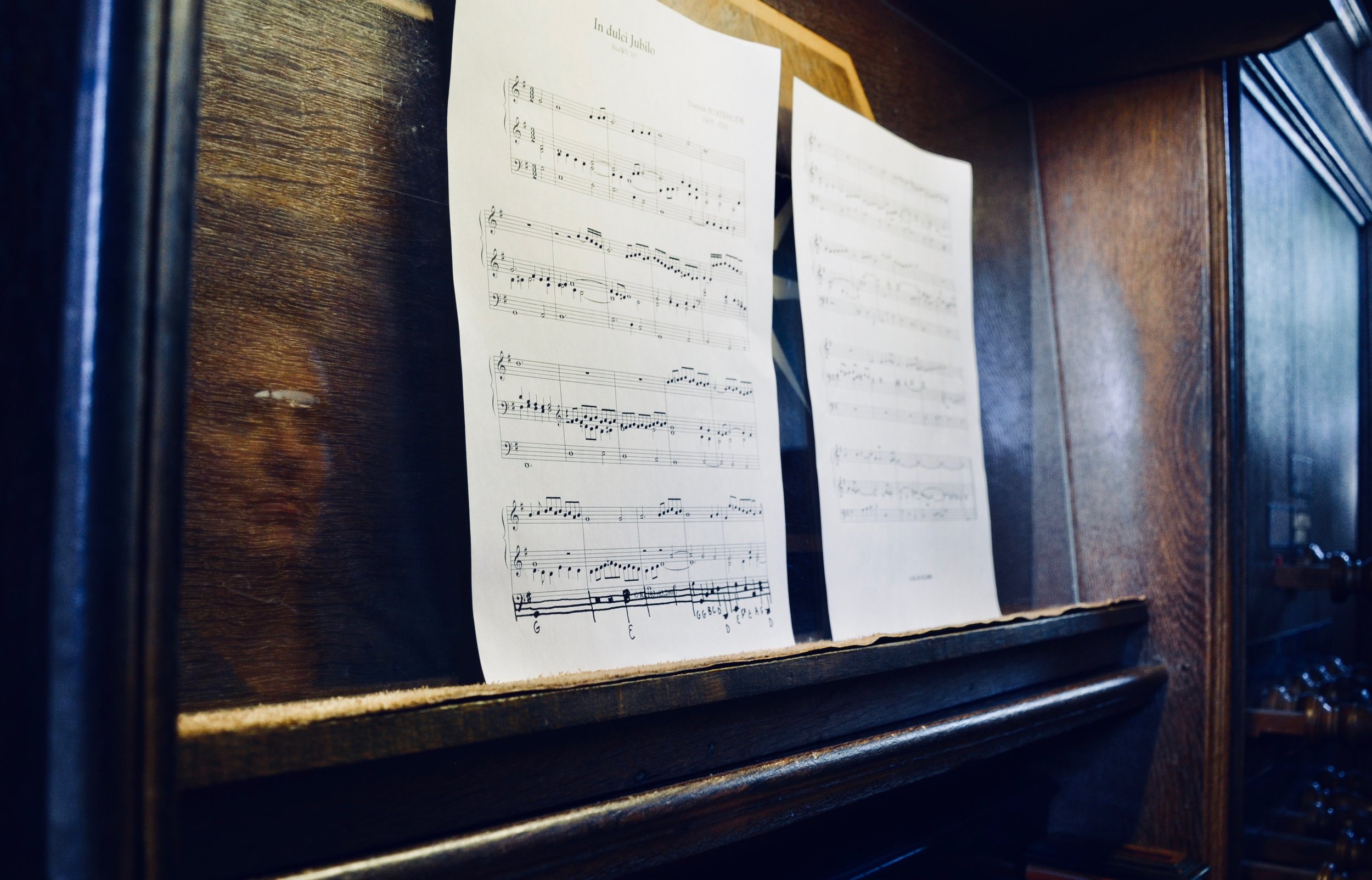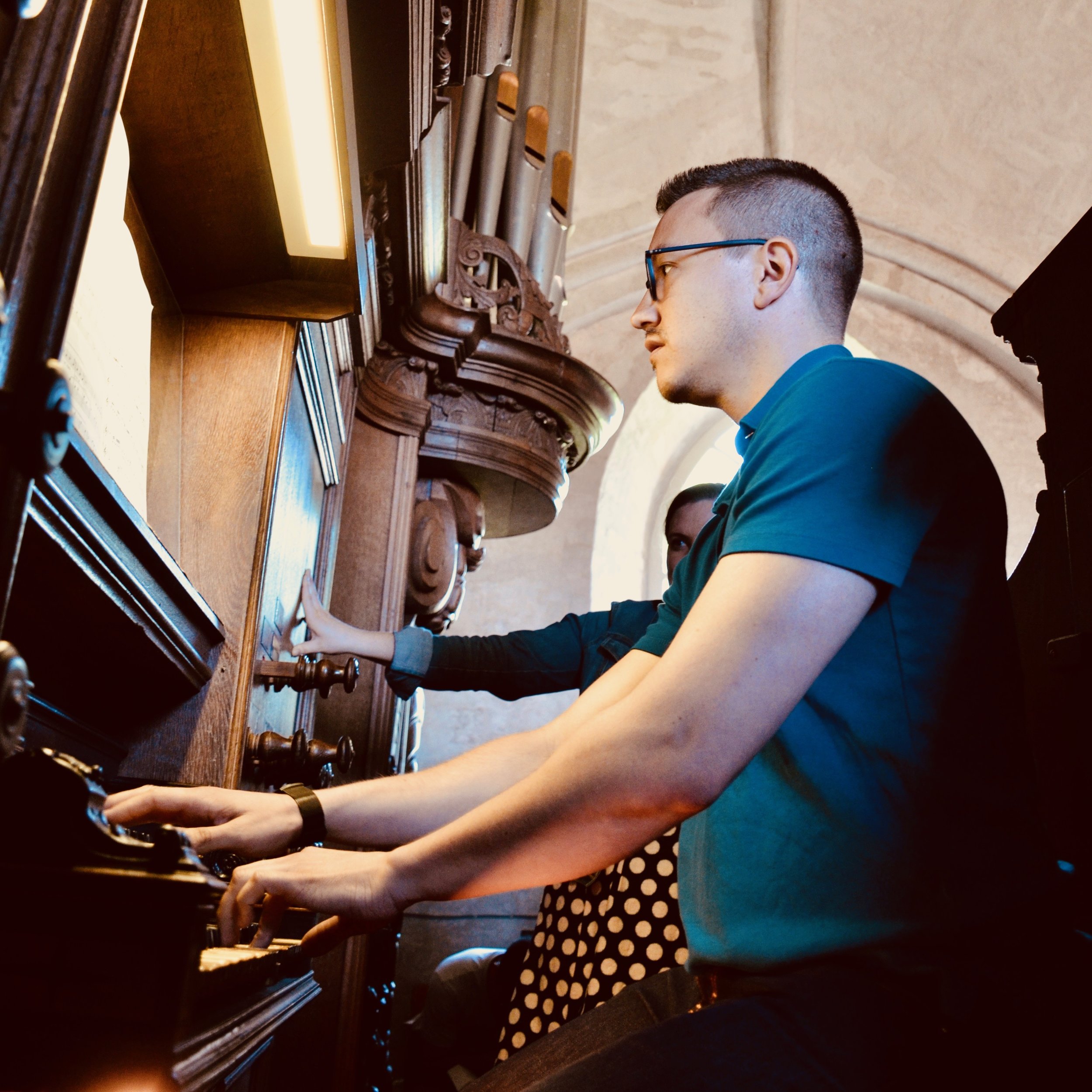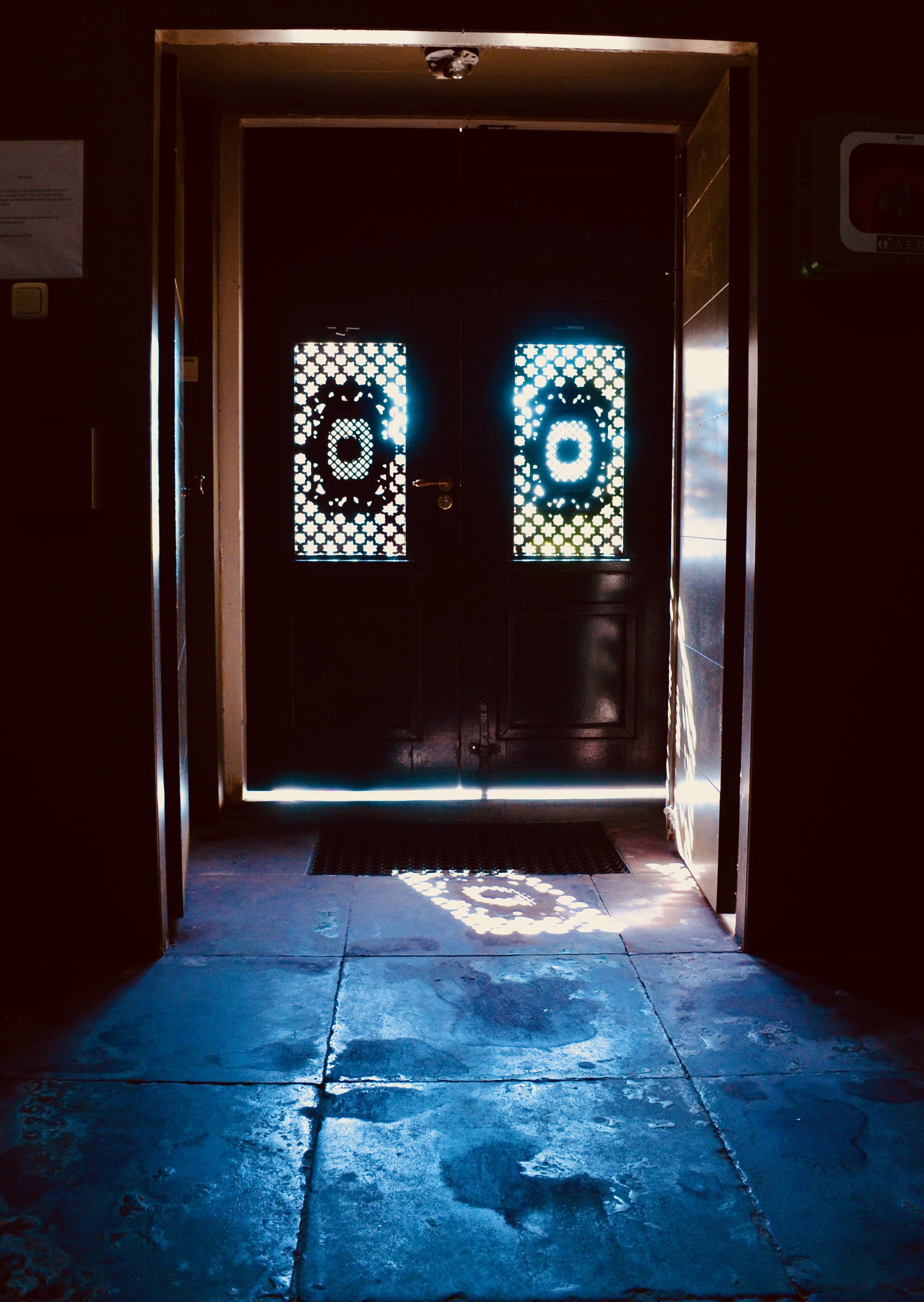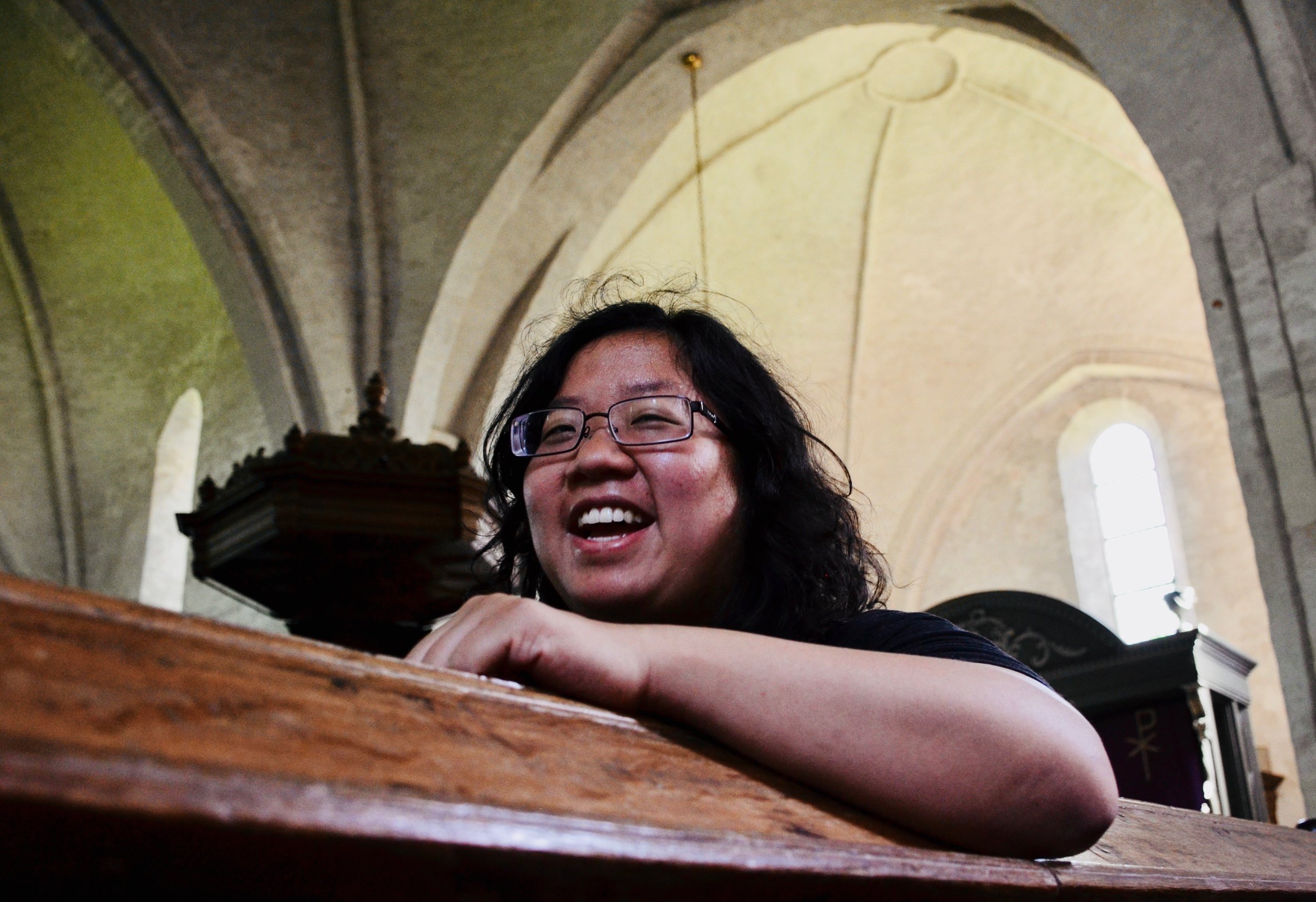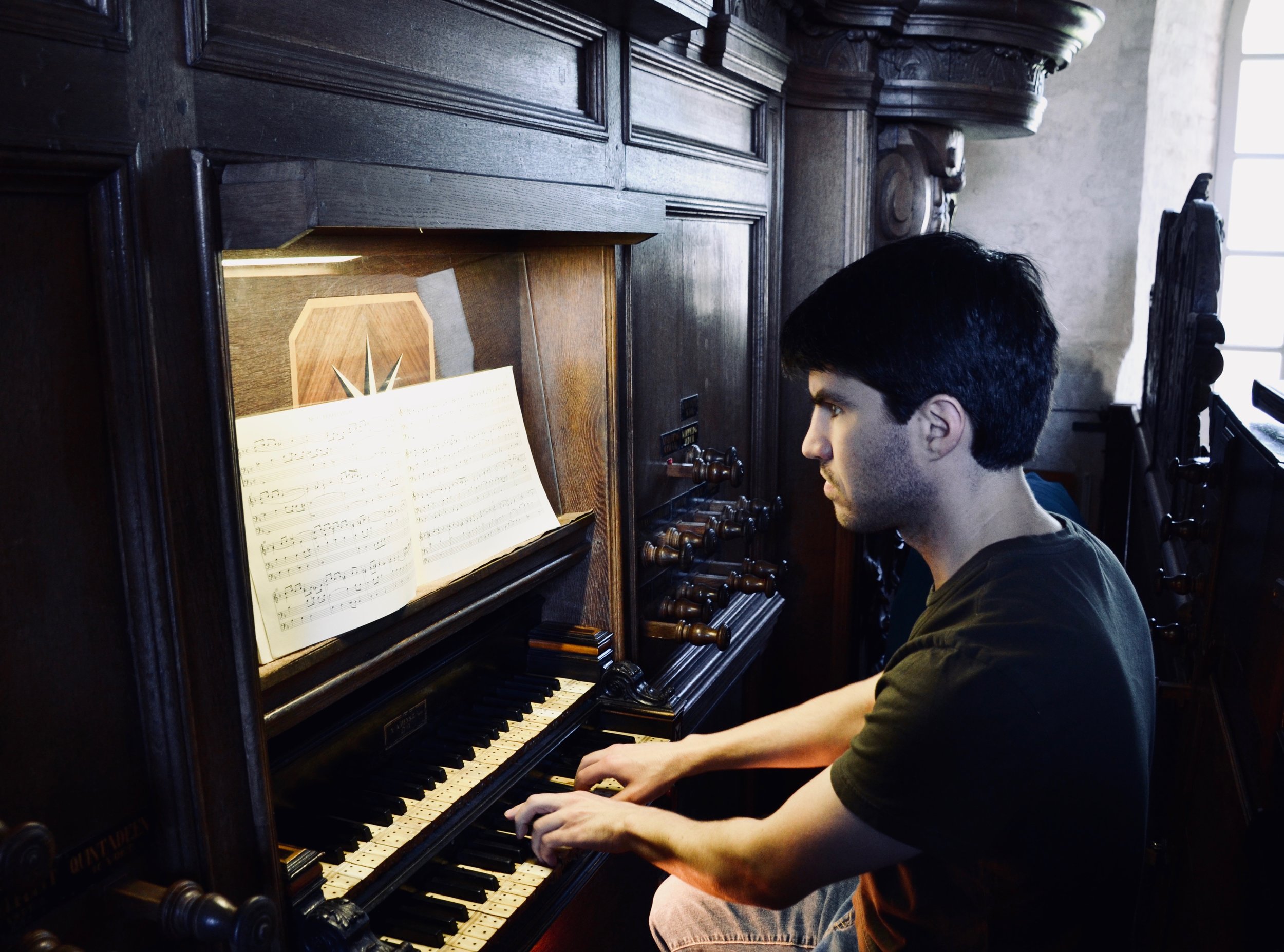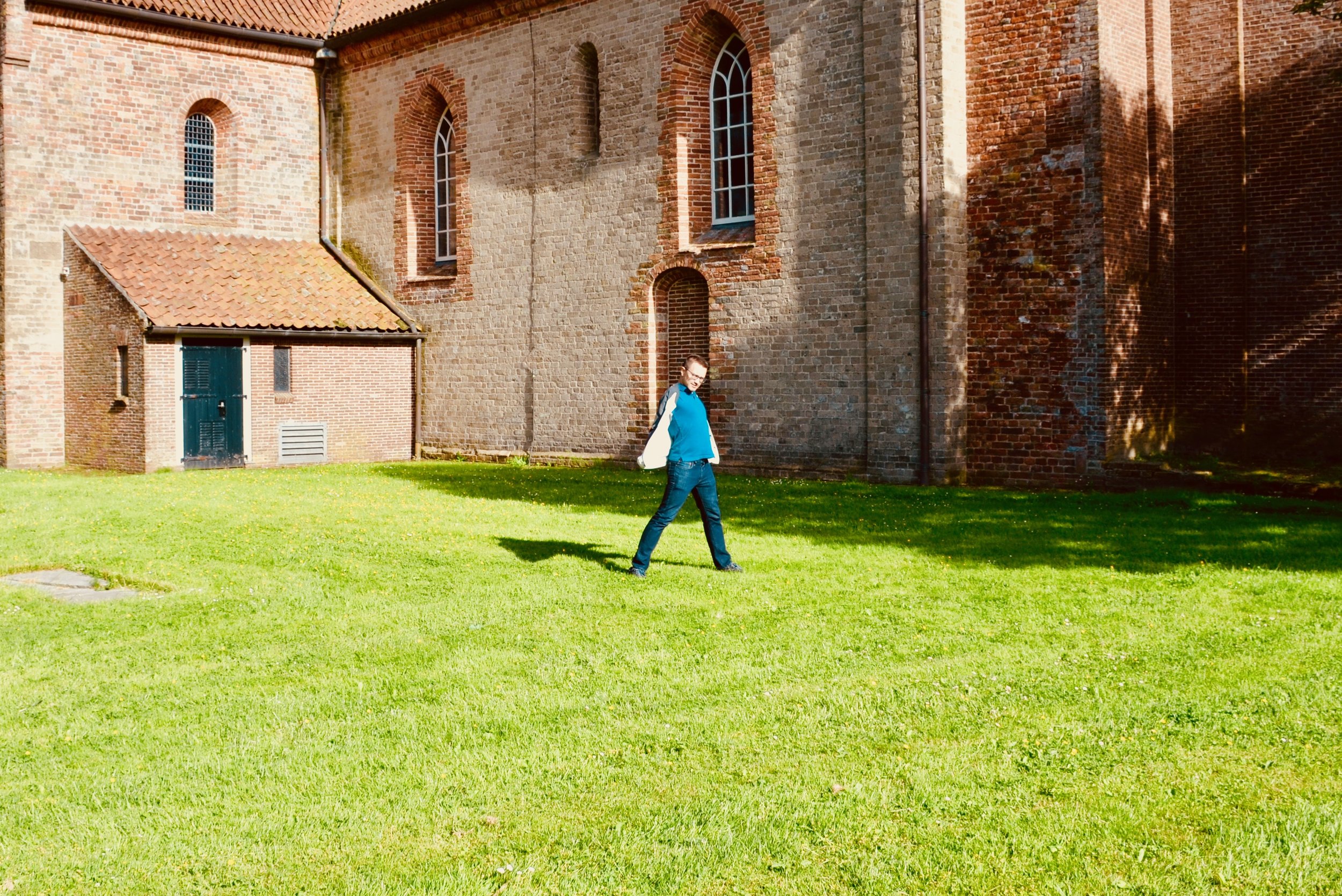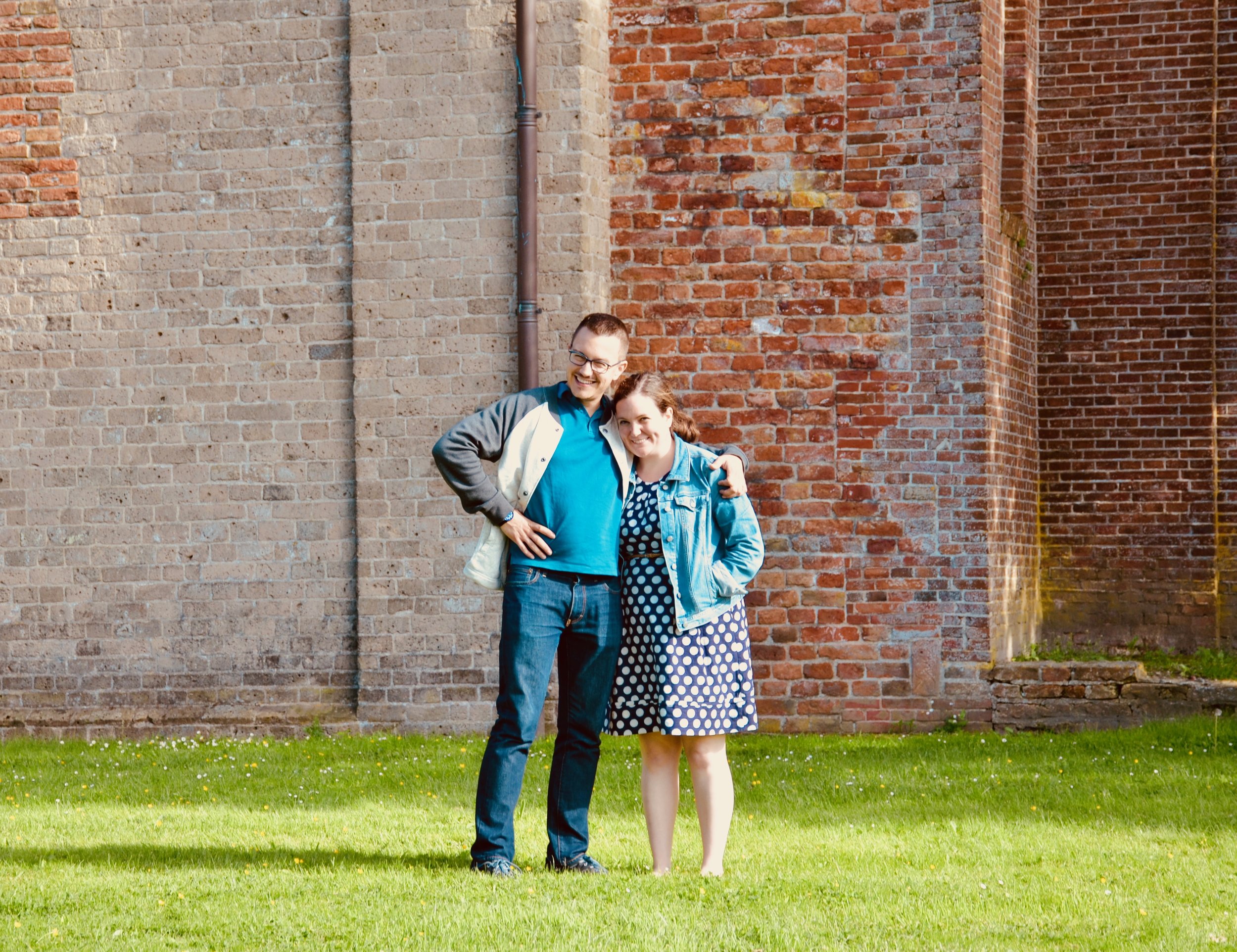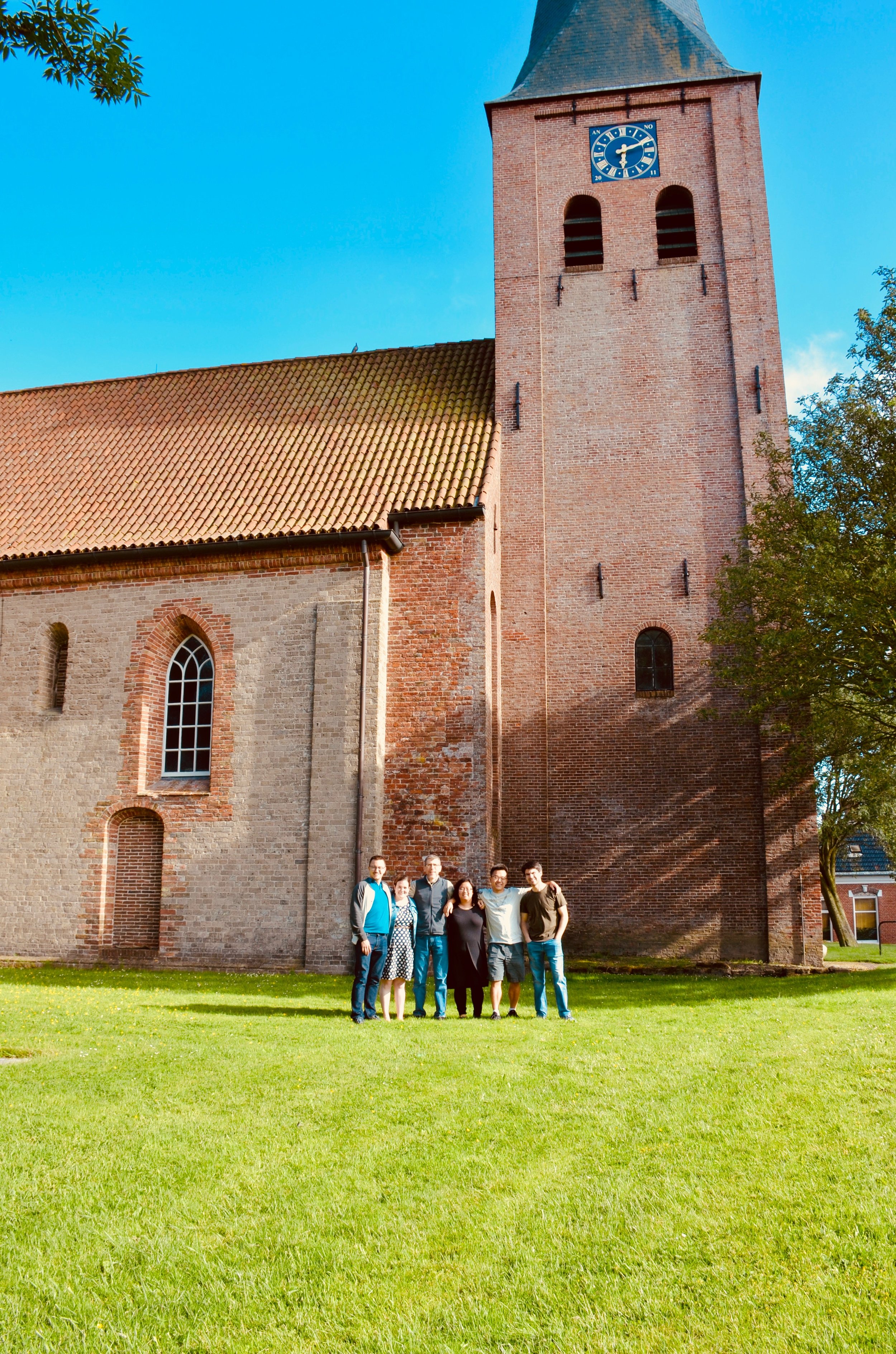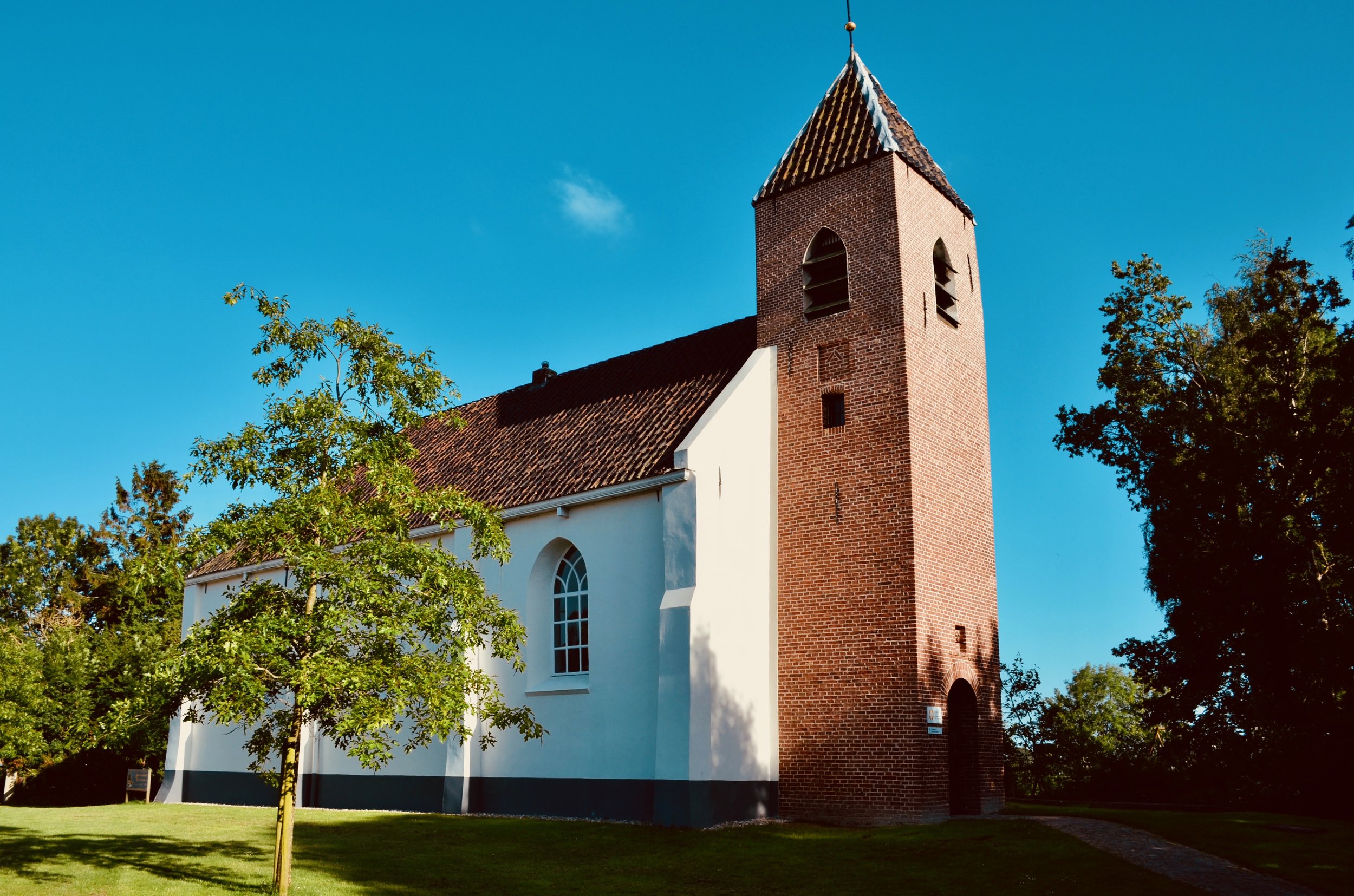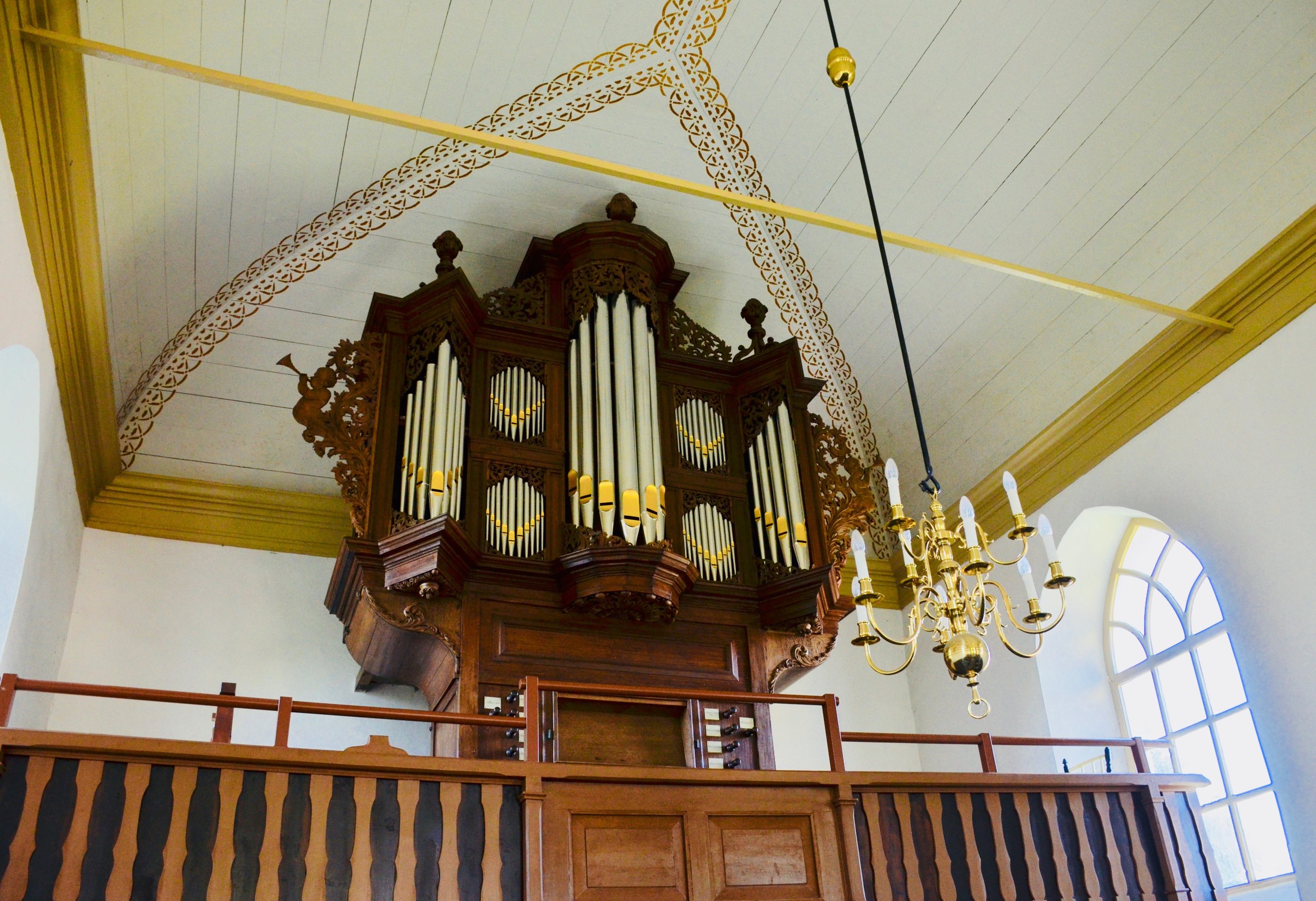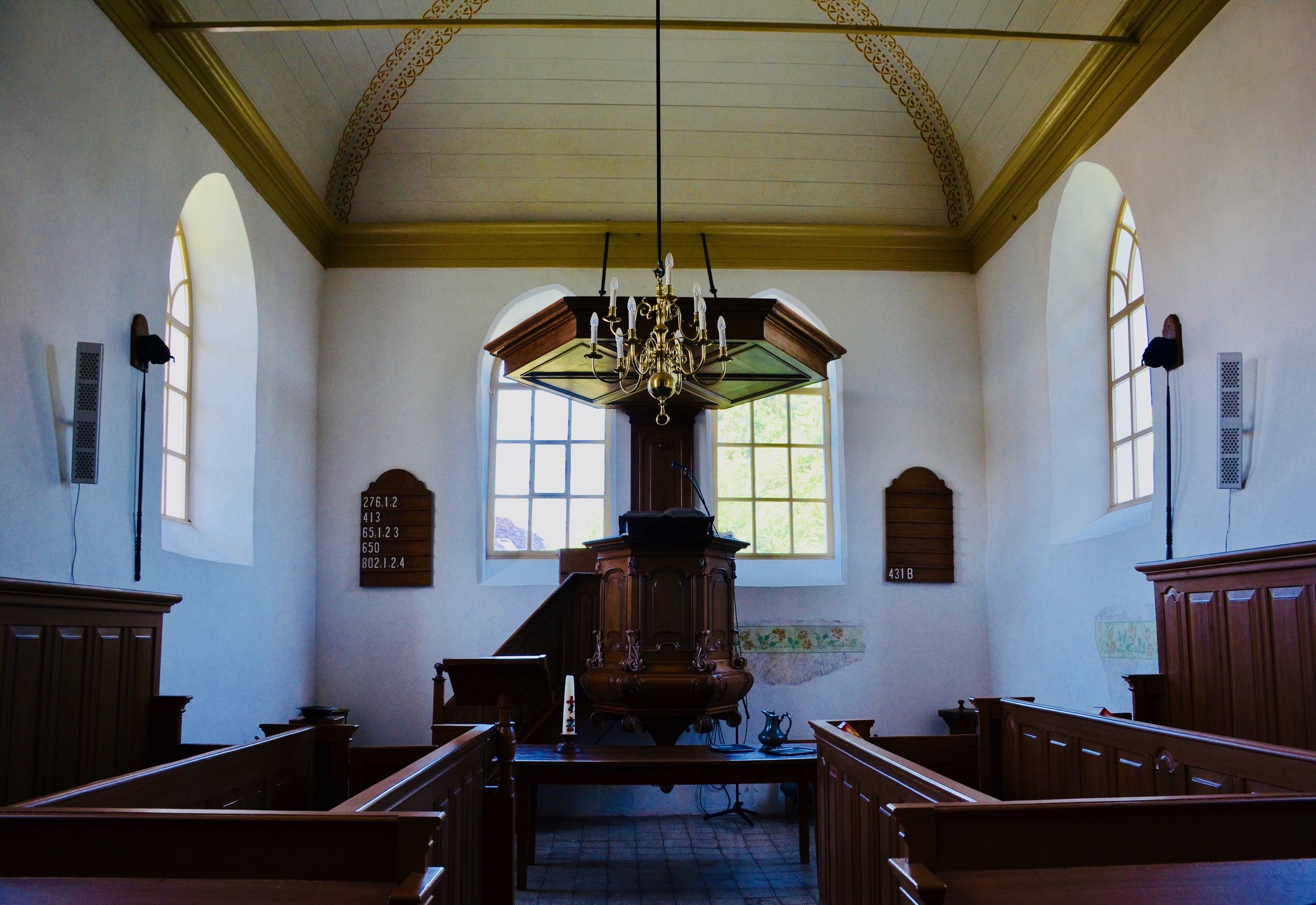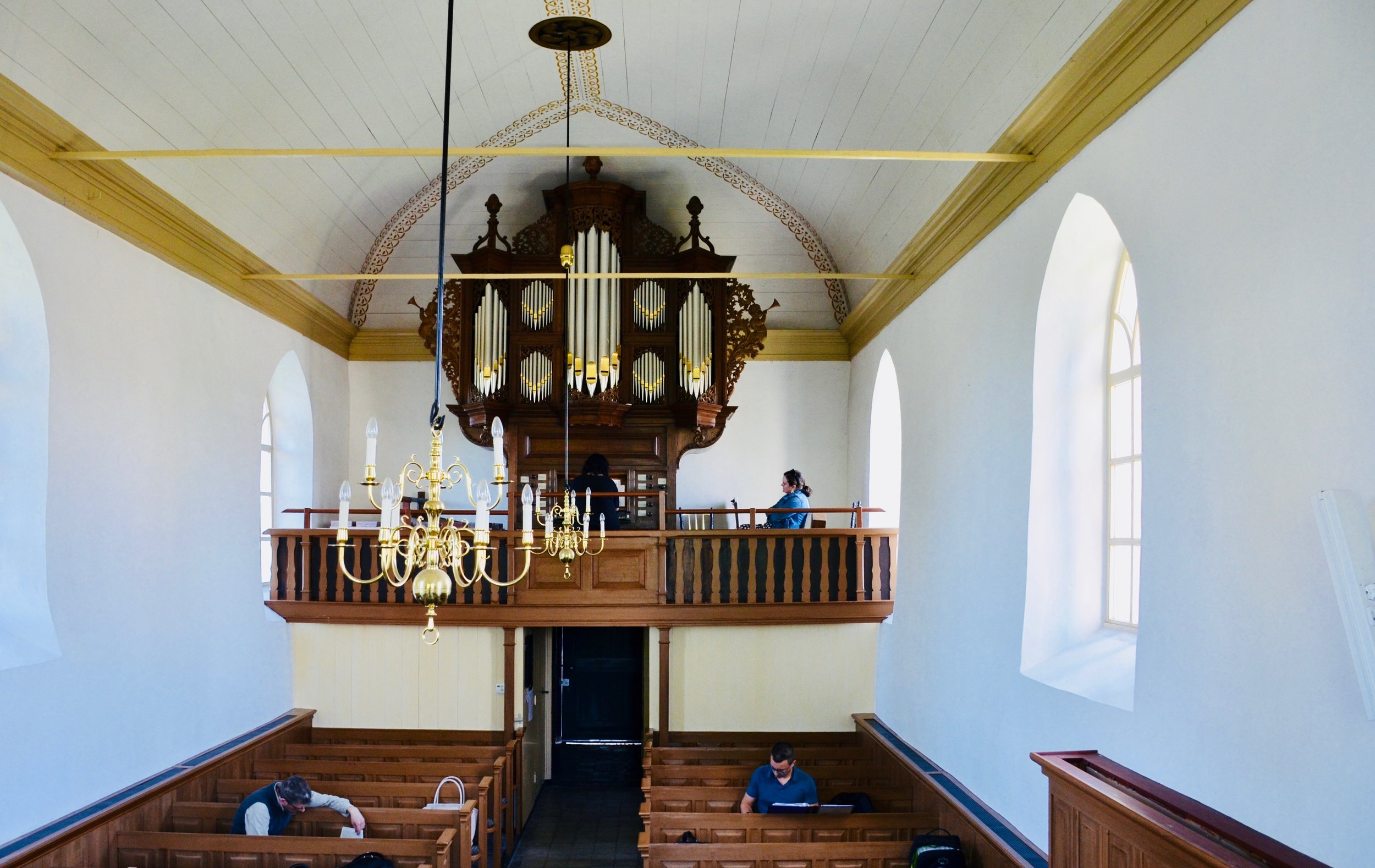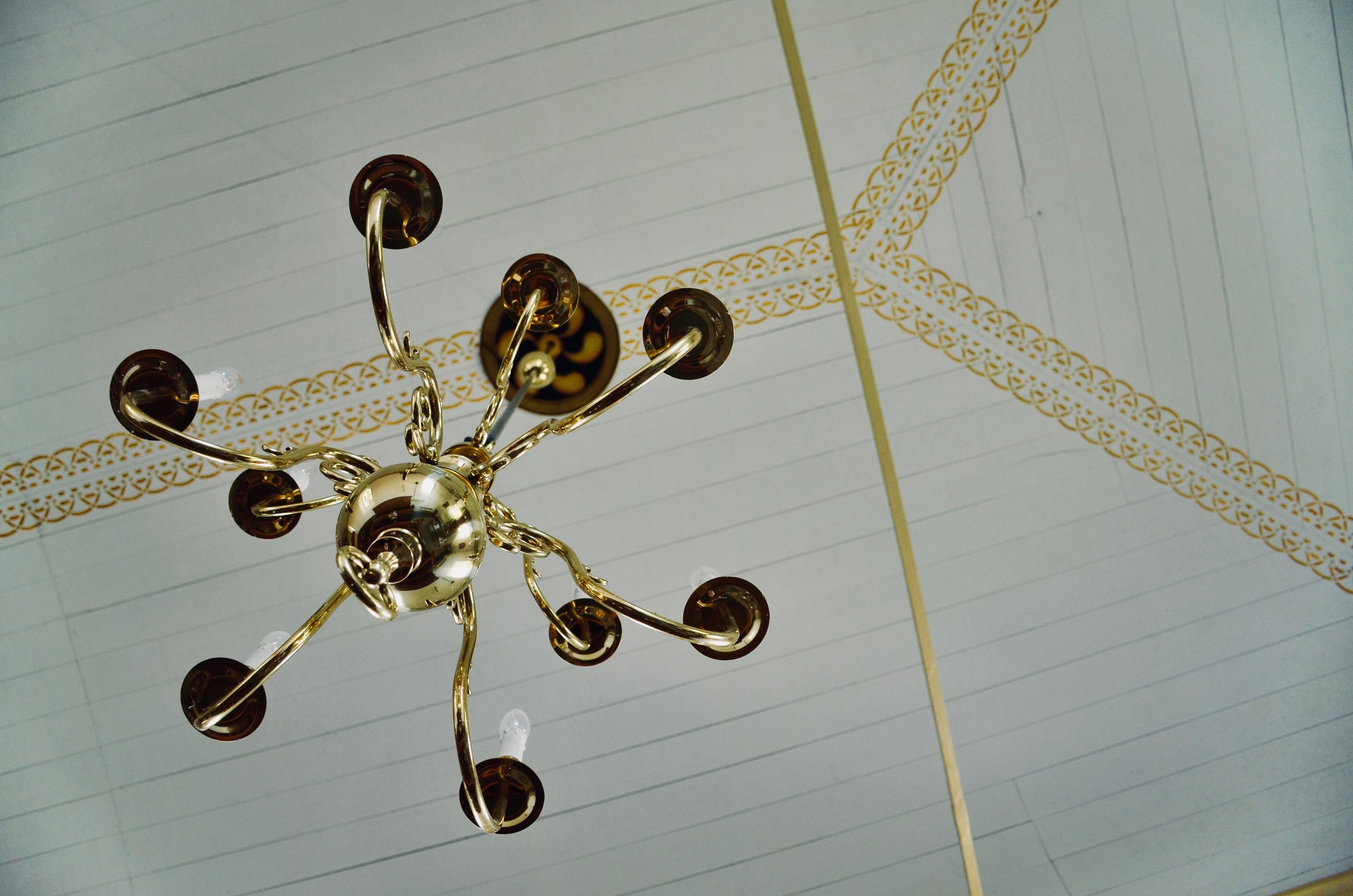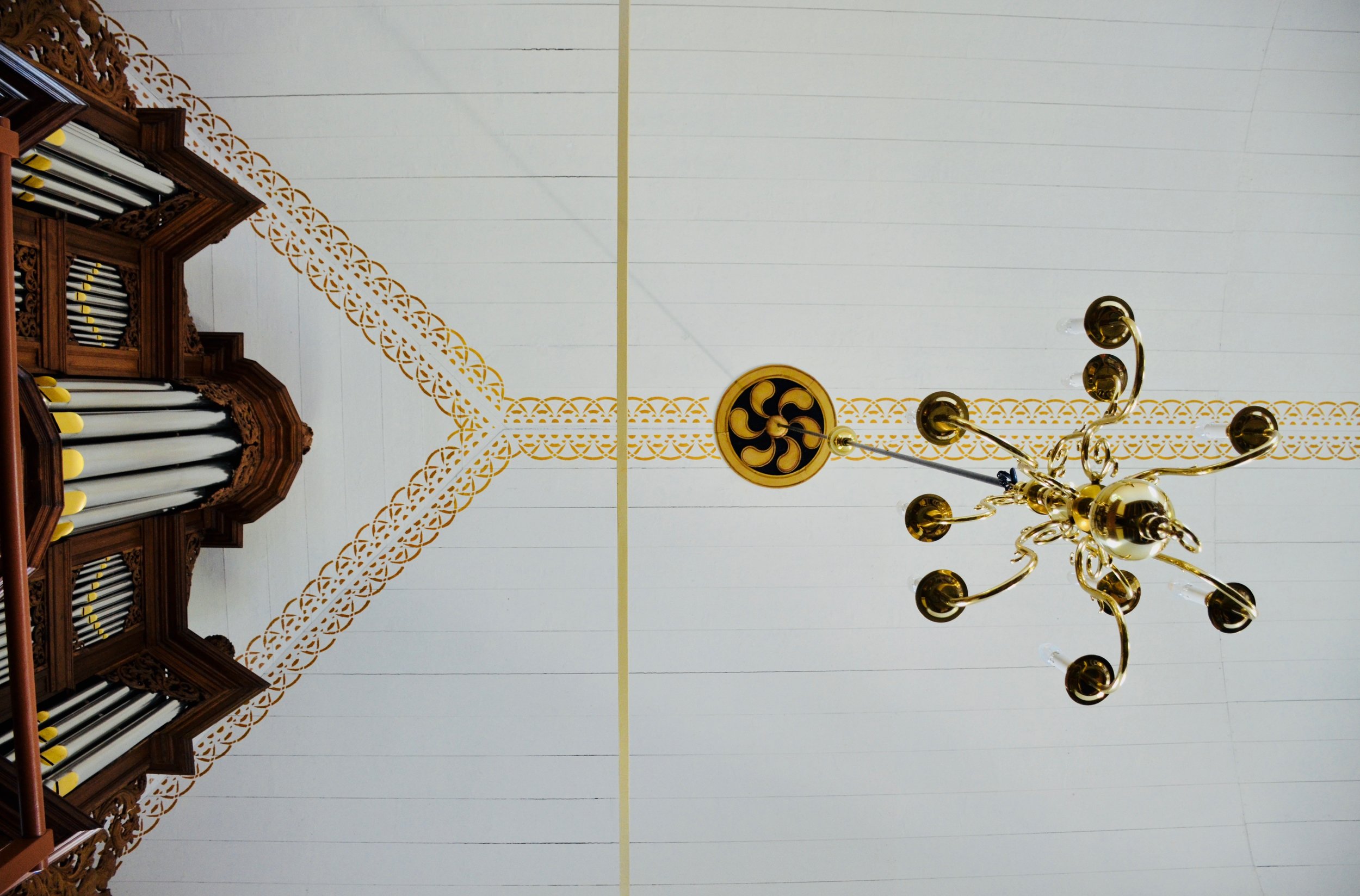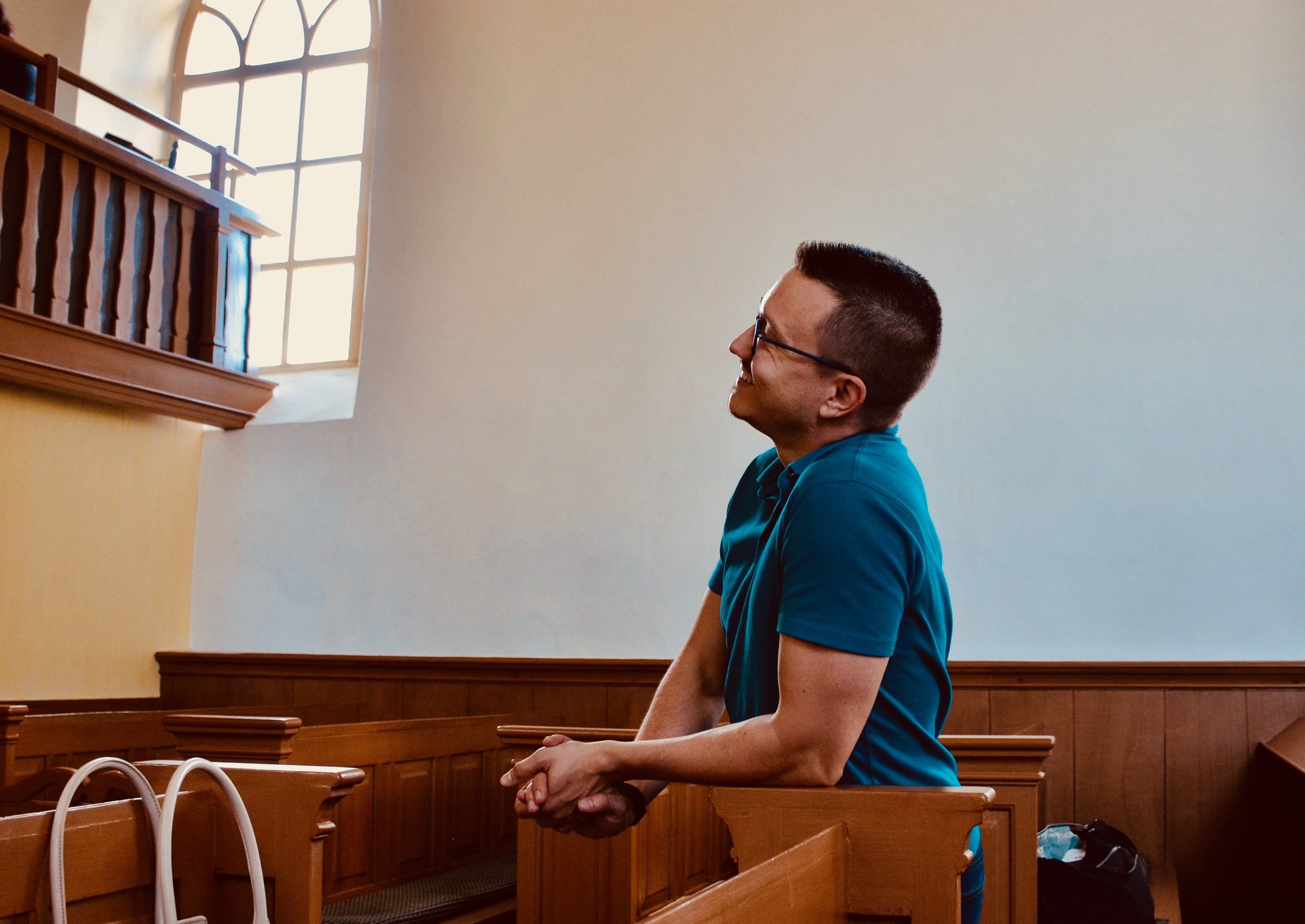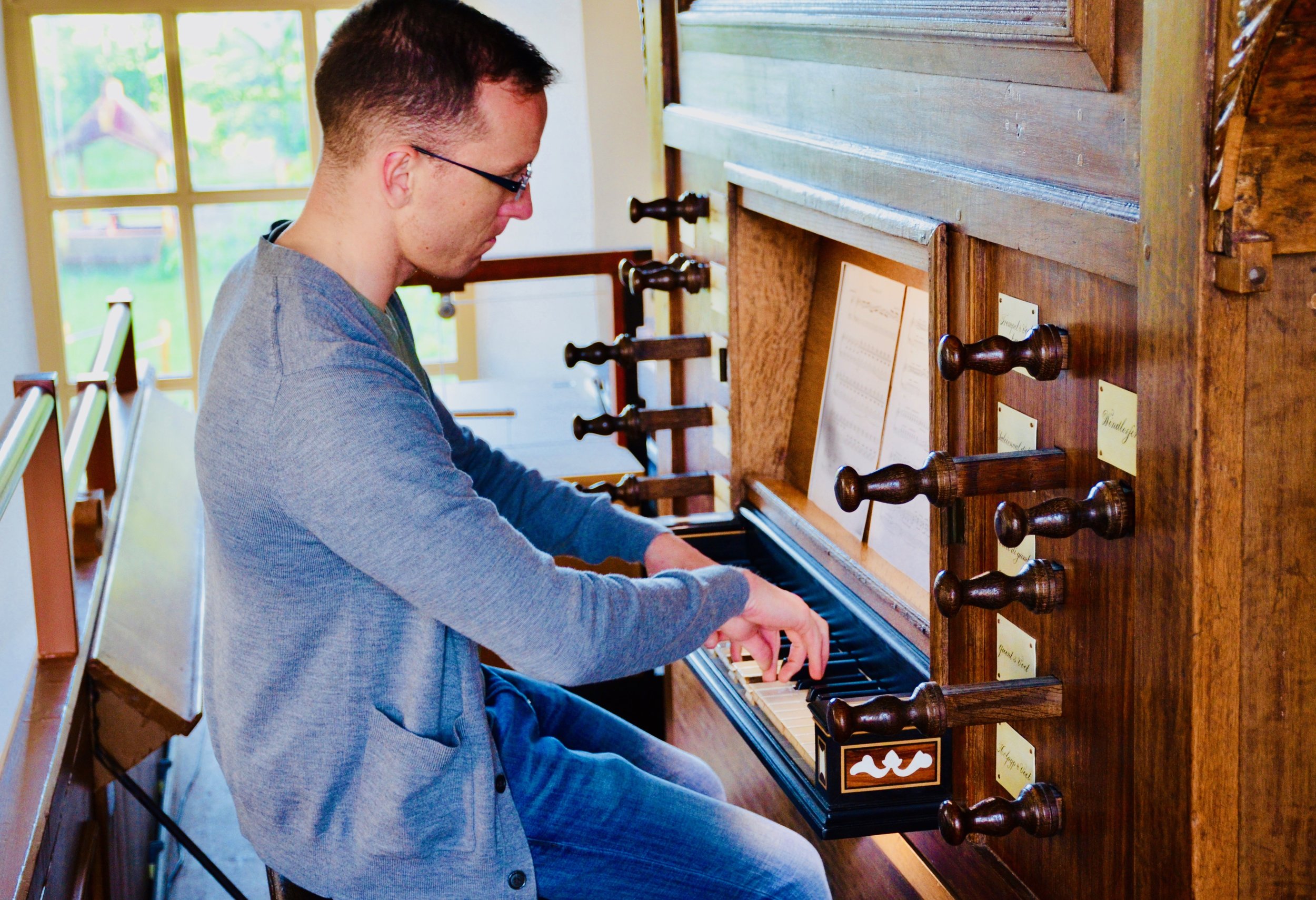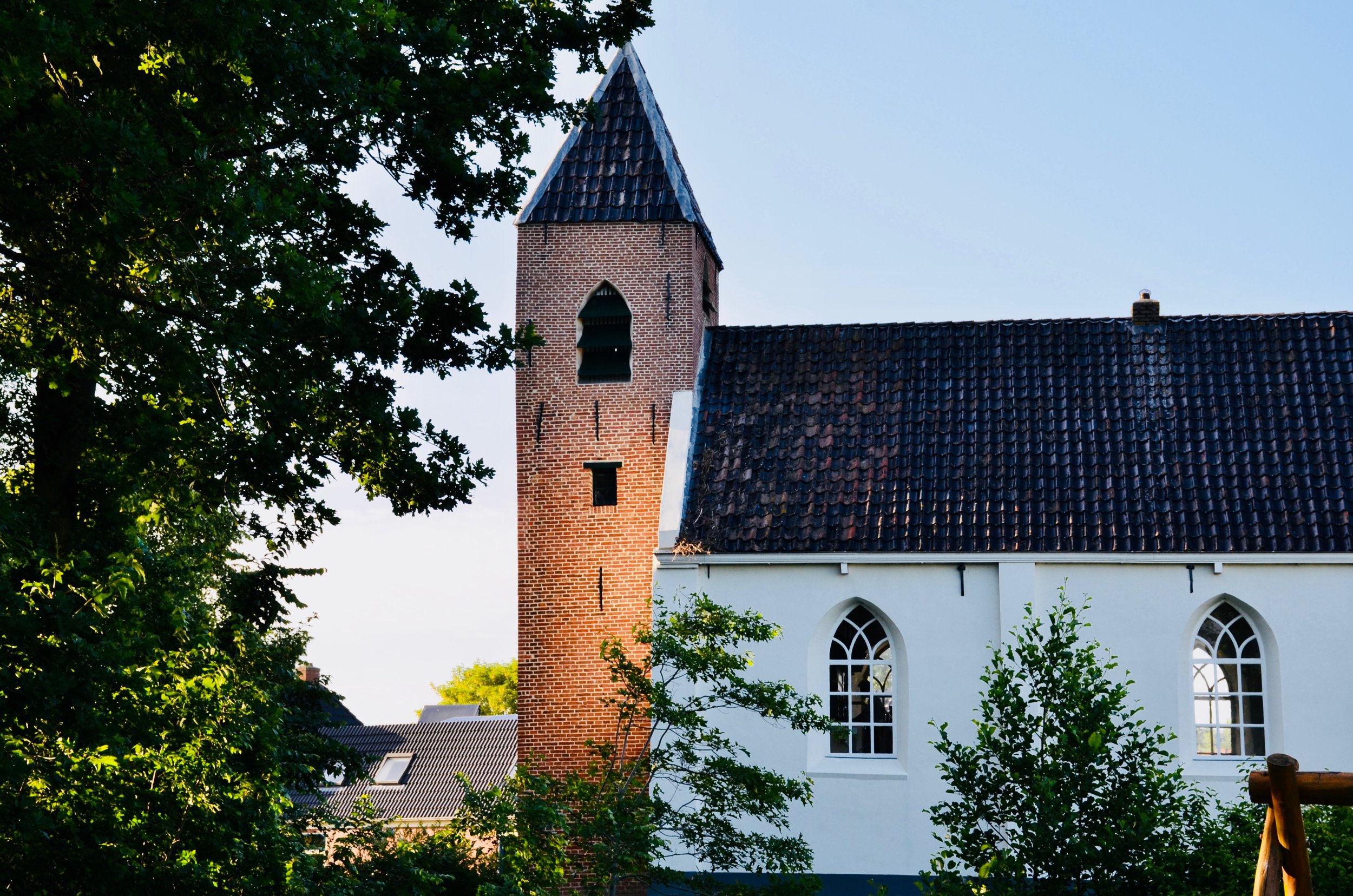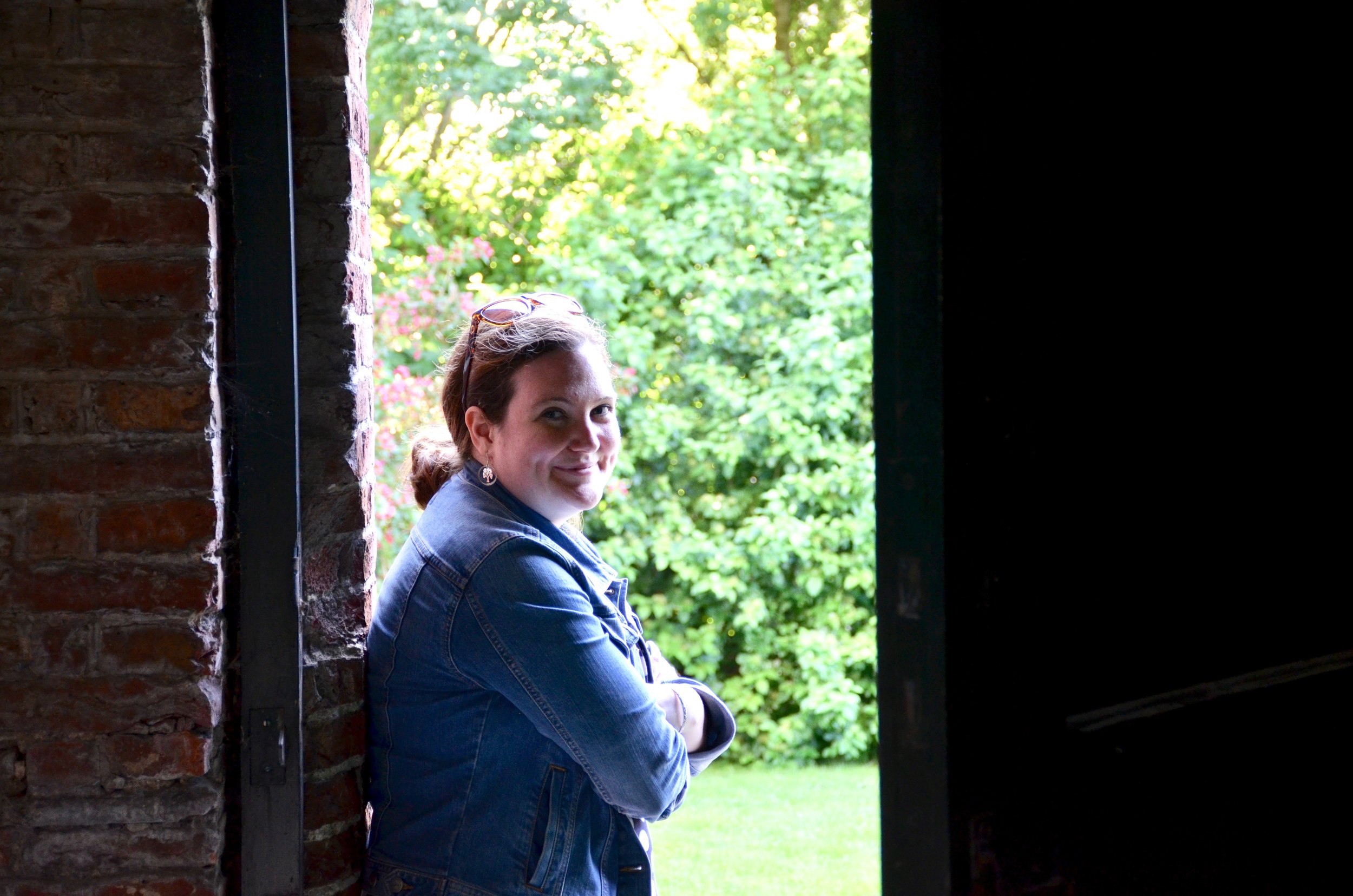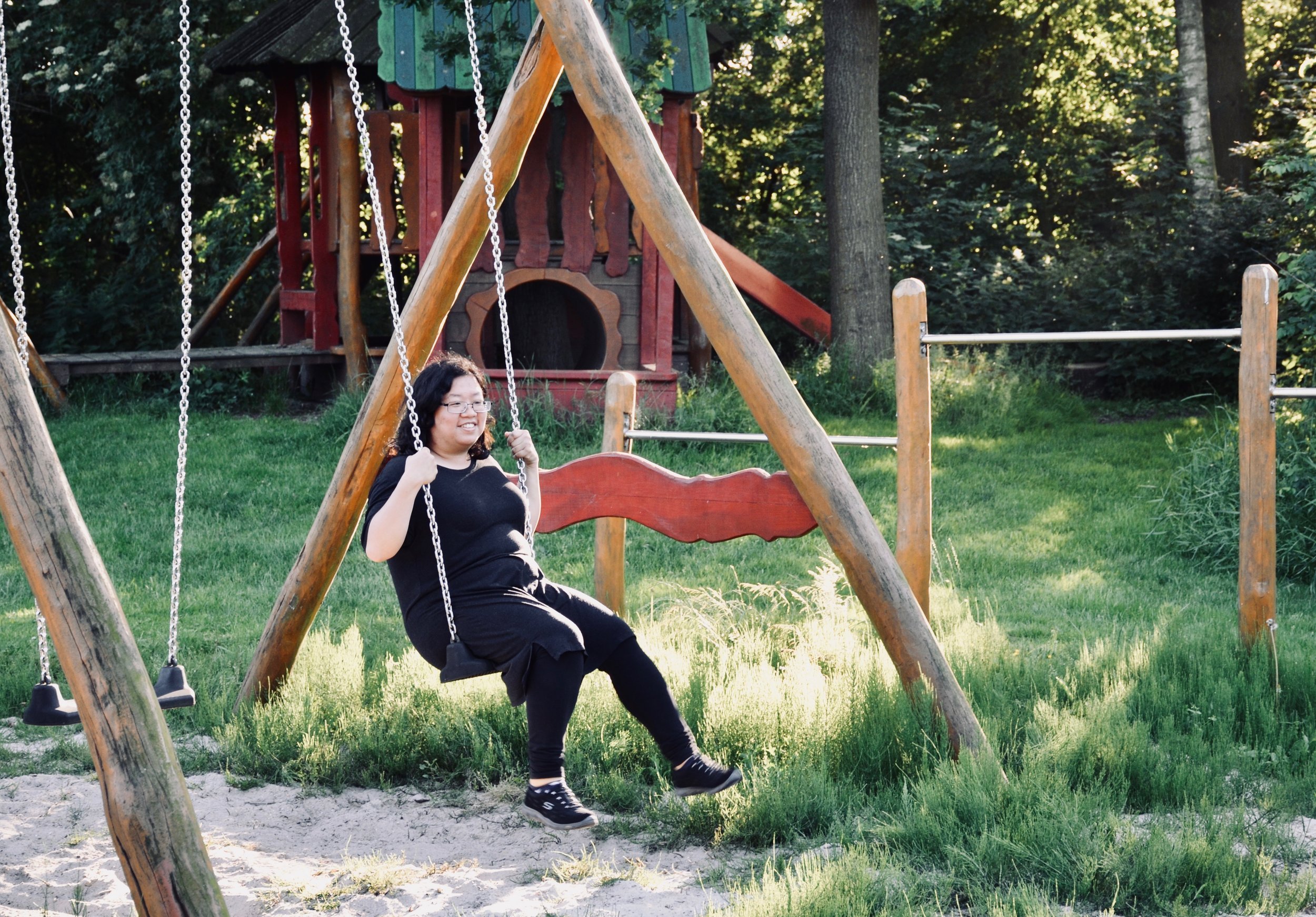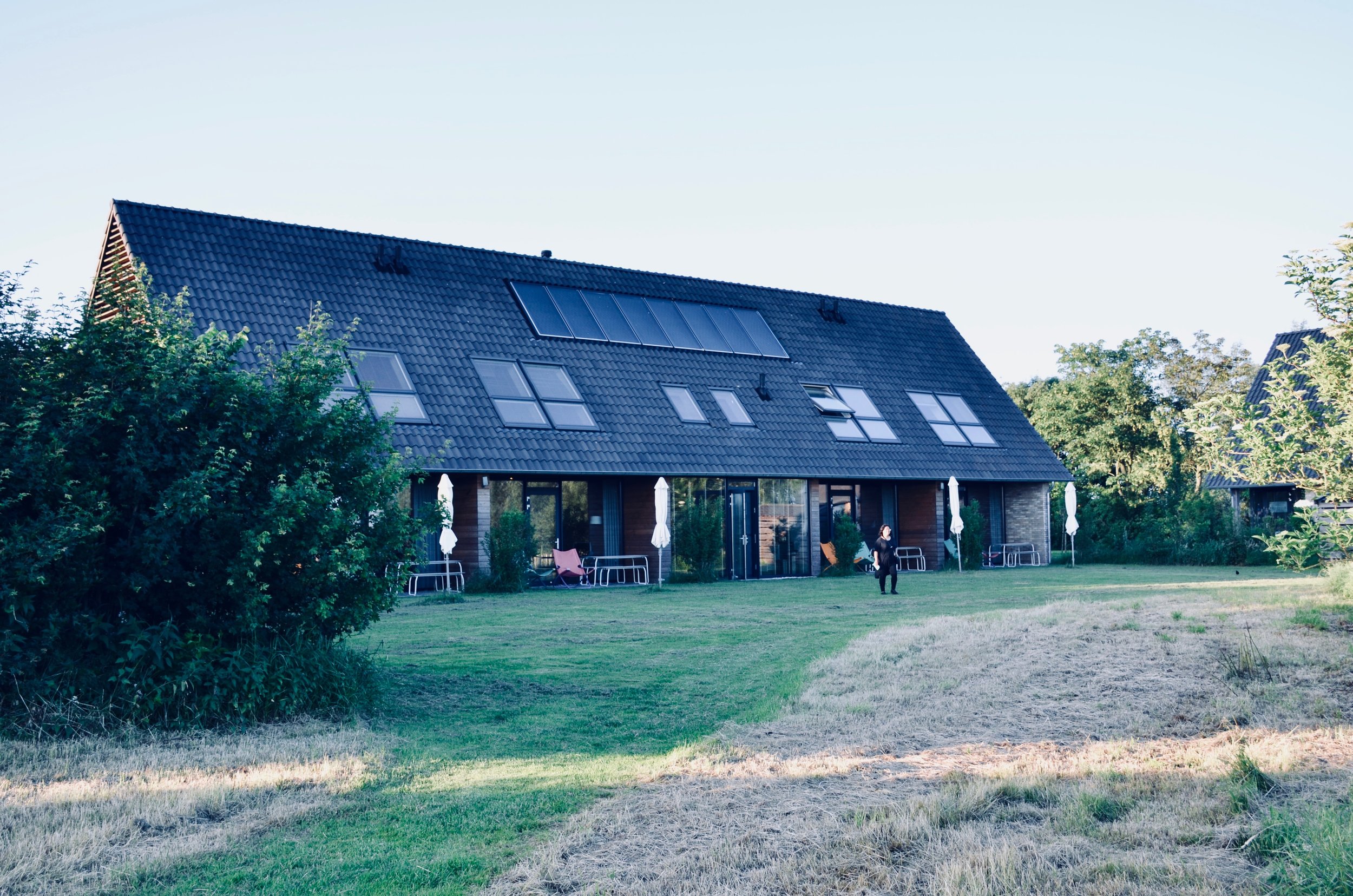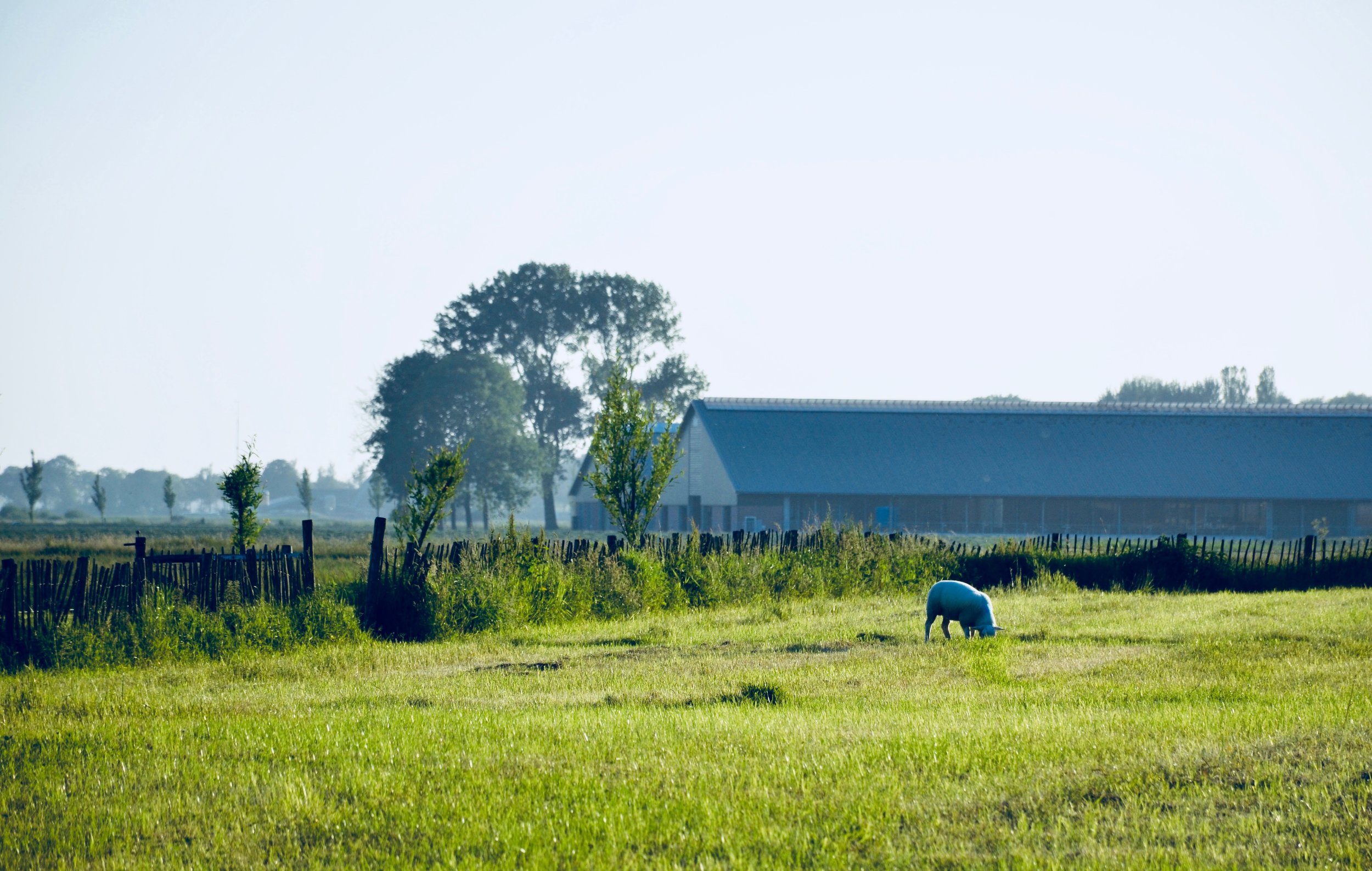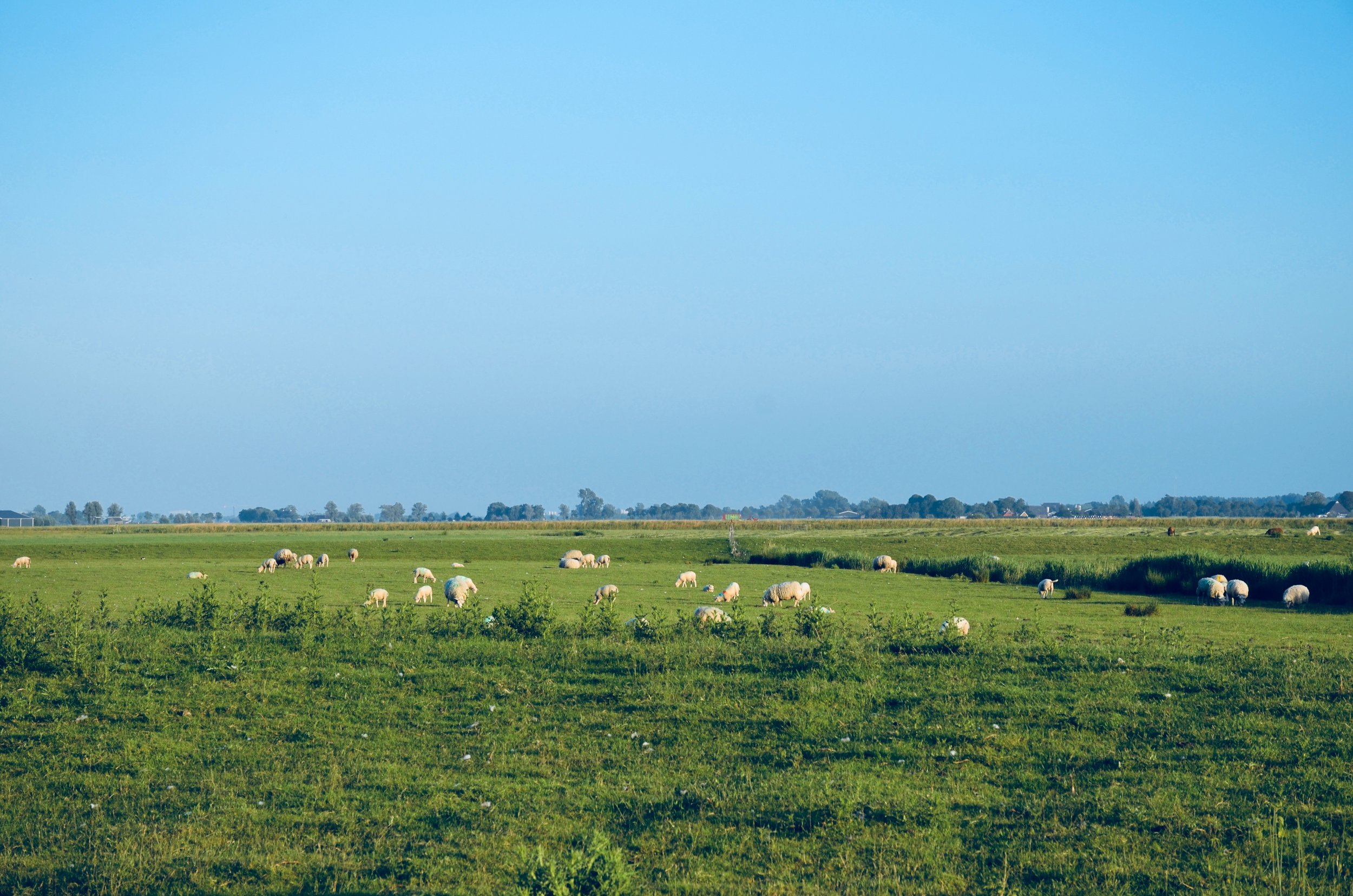Day 3: A herd of sheep and a one-horse town
by Chris Porter
Chris L. wisely scheduled a late start this morning, so our group was able to continue our recovery from jet lag and also explore our new surroundings a bit. We found ourselves in the middle of a flat plain, surrounded by fields laced by tree-lined canals and grazed by sheep. Actually, that pretty much describes most of the rural Netherlands. Despite the feeling that we were in the middle of nowhere, a glance at the map showed we were only a 15-minute walk from a main road with regular bus service. Our house was part of a small camping complex with shared access to bikes and canoes, which we hoped to try out later.
Our first appointment of the day was at 1 pm at Petruskerk in Leens, a small, immaculately groomed village just off the main road — the first of our two "one-horse towns" (as our host called them). The morning clouds had gradually parted and the sun now shone brightly, although the air was kept cool by our proximity to the North Sea. Our half-hour drive was made slightly longer as we waited for a drawbridge to let a boat through on the Zoutkamperril, a canal that divides the provinces of Friesland and Groningen. We were met by the husband of the organist, who let us in, informed us we could stay as long as we want, and then gave us the key to yet another church that we could visit at our leisure after this one! We were excited to spend the rest of the day, and much of the evening, with these organs all to ourselves.
1733 Hinsz Organ, Leens, Holland.
The organ in Petruskerk was built in 1733-4 by Albertus Anthoni Hinsz of Groningen. Hinsz had established his reputation with the rebuild of the organ in the Martinikerk at Groningen in 1729, which we expected to visit the next day. The organ was built with 27 stops, divided among two manual divisions and an independent pedal. The ornate case was tribute to the local wealth that was able to place such a fine organ in a modest church – and the beautiful tones emanating from the case were even more impressive. The organ had a quintessential north German Baroque sound, with a clean principal chorus, vibrant flutes, and warm, balanced reeds. We spent a leisurely afternoon exploring our full range of literature, especially enjoying filling the church with principals and mixtures on a variety of works by Bach, Buxtehude, Distler, Pachelbel, Strunck, and Sweelinck, exploring softer textures with Arvo Part’s Triduum, doing a bit of sightreading, and even allowing Chris L. to spend time giving us a mini-recital.
Michaëlkerk, Mensingeweer, Holland.
Around 6:00 we decided we were sated, and after a stop for groceries, drove a few miles to the similarly immaculate and even smaller town of Mensingeweer. Here we found the tiny Michaelskerk surrounded by a manicured green lawn and brick houses with flowering, well-trimmed gardens. This church is known for its 1698 organ built by the famous Arp Schnitger, last restored in 2003. Despite having only one manual with nine stops and a permanently coupled pedal, all of us would have loved to have this organ at home. Chris L. was particularly taken with the strong yet subtle 8-foot principal. Walking outside in the gentle evening light, we found that the sound of the organ overflowed the church and spread to the surrounding village. We decided the local residents must not only tolerate but relish their position as trustees of a fine musical instrument.
Canoeing!
Arriving at our lodging after 9 pm, Chris L., Jennifer, and Corey found the canoe launch and took boats down a small canal until they came to a fork in the waterway and decided to return home before they got lost. With the usual highly talented but poorly organized dinner crew, dinner of salmon, risotto, and spargel finally arrived around midnight.

